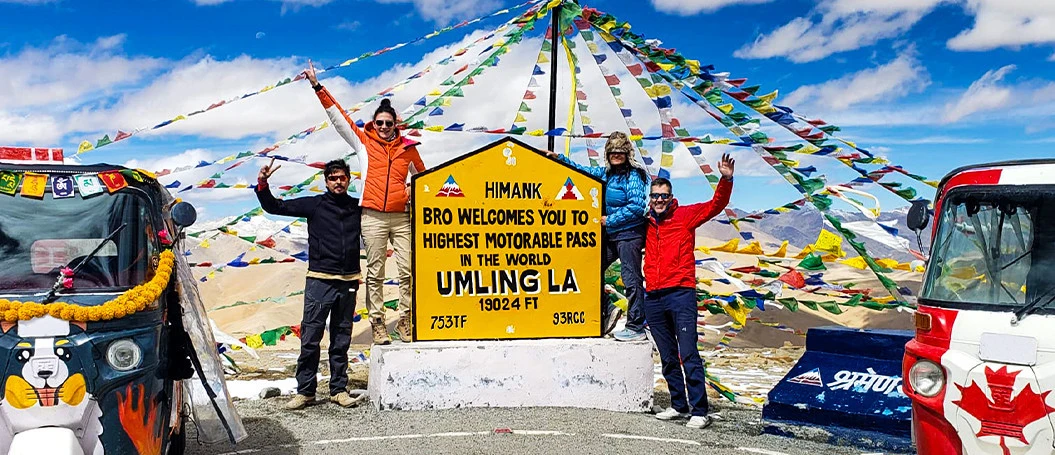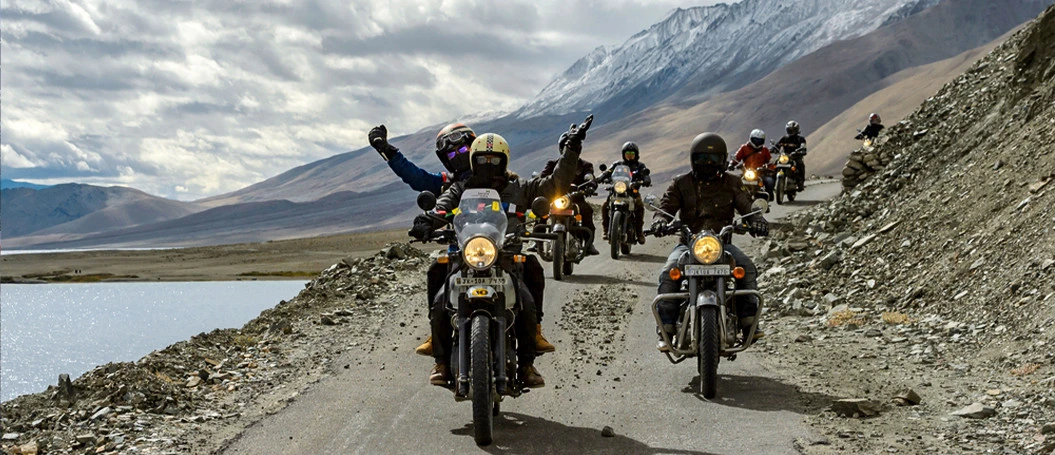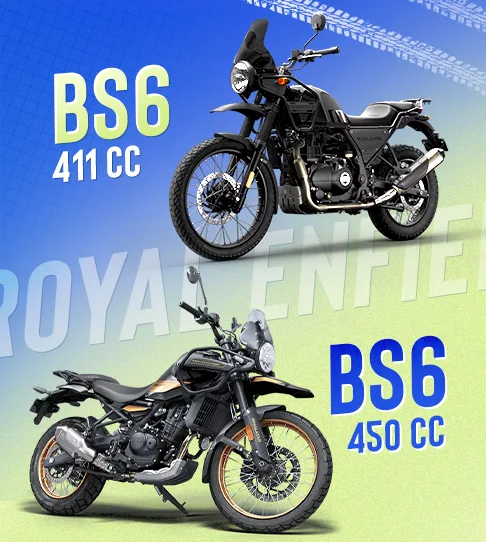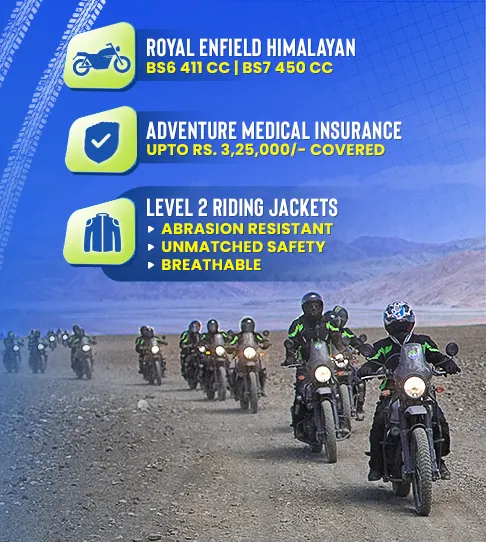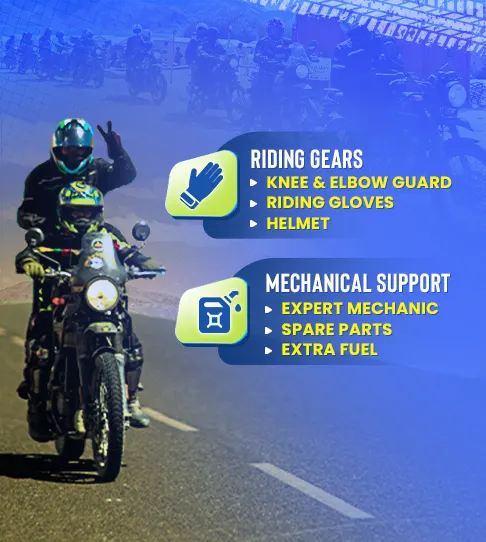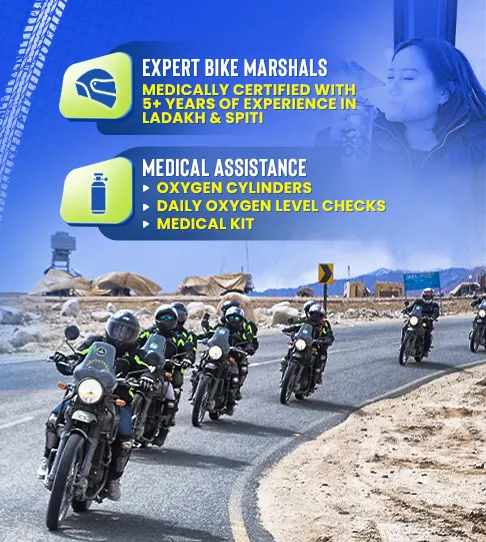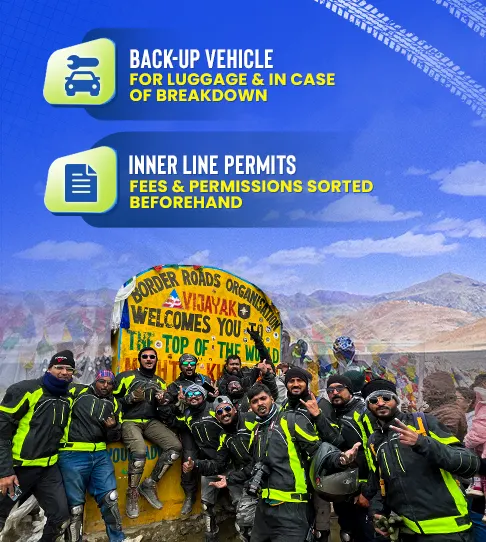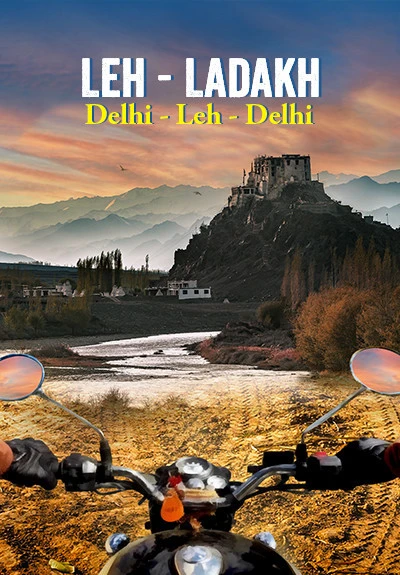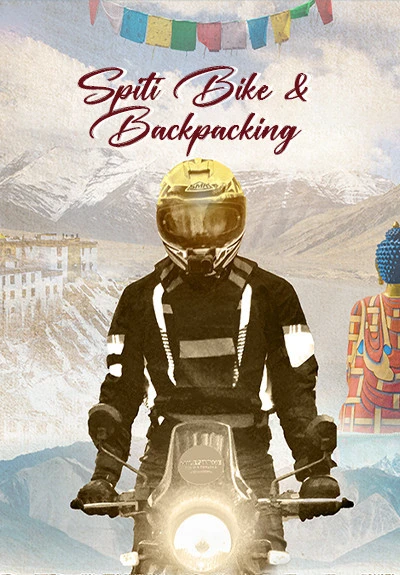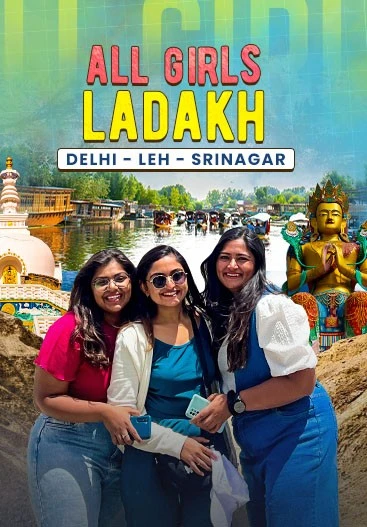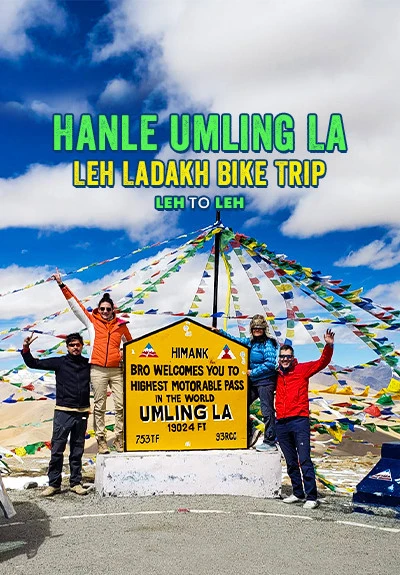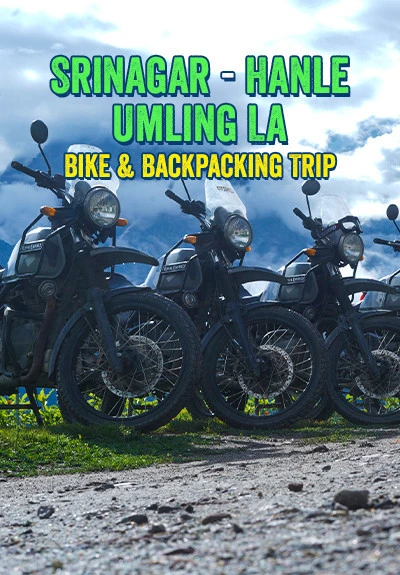
.webp)
.png)
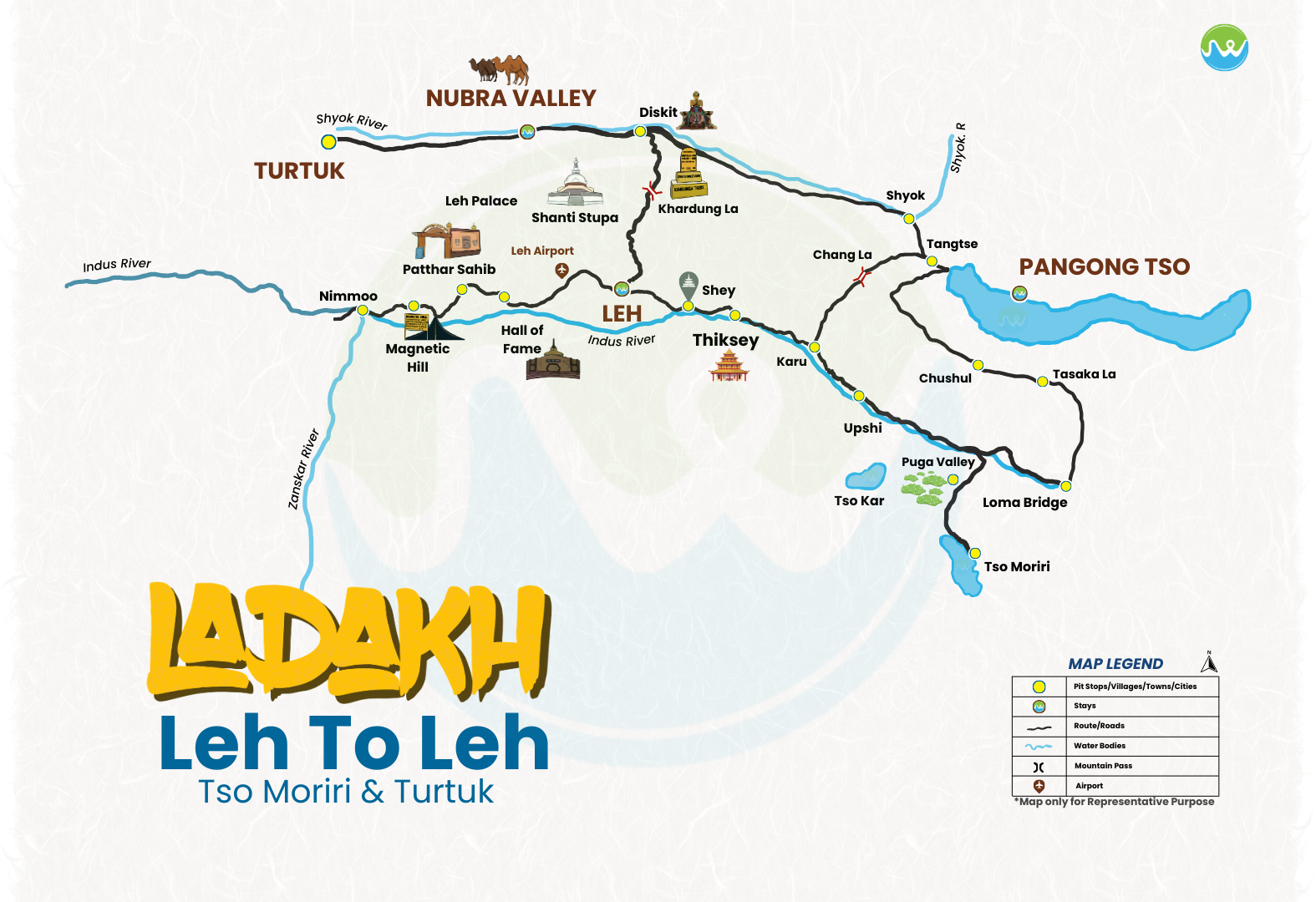
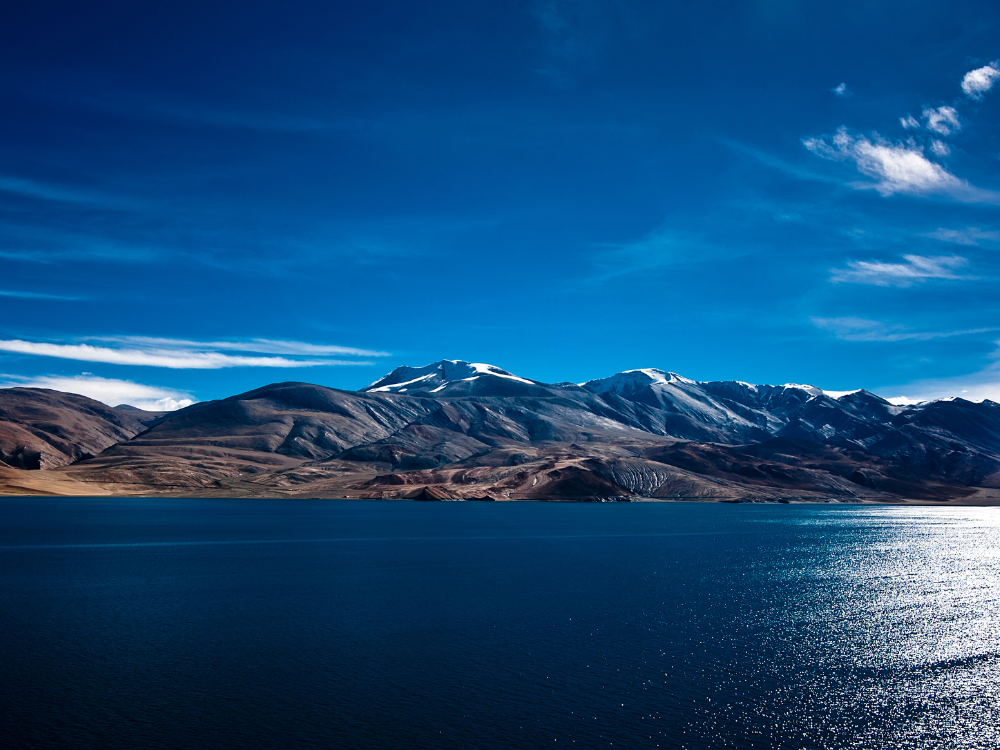
Leh Ladakh Tour with Tso Moriri and Turtuk
Details
Inclusions
Safe Travel
Flexible Cancellation
Easy EMI
Certified Captains
24/7 Support
Overview
A road trip to Leh-Ladakh is something a traveler has on top of their priority list. Popularly known as the “Land of High Passes”, Ladakh provides a wide range of opportunities for adventure enthusiasts. Nestled as its capital, the town of Leh has been a significant part of Ladakh's history and still continues to be extremely popular among travelers. From serving as the stop point for trade routes along the Indus Valley and also between India and China for centuries to now being the bridge that connects distinct cultures, Leh is a fascinating town brimming with diversity and heritage.
In this road trip to Ladakh, we traverse through many destinations that are not only major attractions but carry the essence of Ladakh in their very walls. From Buddhist monasteries that have preserved ancient relics and thangka paintings to the iconic motorable high passes that attract riders from all over the country, this Leh-Ladakh tour is specially curated to provide you the thrill you seek as well as give you a glimpse at the serenity that the beautiful valleys of Ladakh have to offer.
This trip starts from our arrival at Leh. Since the altitude is high and weather conditions are harsher compared to plain regions, it's necessary to allow your body to get acclimatized properly. Spending a day in Leh is a crucial part of this Ladakh road trip. Since the ascend isn't gradual, many travelers face certain health-related issues when they embark on this journey but you won't have to worry if you let your body adapt to the conditions.
After spending a night under the starry skies, you will perhaps realize what you were missing out on while stuck in the daily hustle and bustle of your life in the metropolitan cities where the air isn't quite as fresh as the one that billows in the heart of Ladakh. Our first stop for the Leh sightseeing in this Ladakh road trip would be none other than the confluence of Zanskar and Indus rivers, locally known as Sangam, located at Nimmu on the Leh-Srinagar highway. Indus, also known as the Sindhu river, is the main source of water for the entire valley when it comes to irrigation practices. The blue waters surrounded by the earthly brown hues of the mountain blend together to offer a view that is not only pleasing to the eyes but fill your heart with awe as you witness nature work its magic.
Other tourist attractions in Ladakh that we make sure you must visit include the Gurudwara Pathar Sahib, a beautiful Gurudwara built in memory of Guru Nanak Sahib in 1517. It is a sacred belief in Sikhism that Guru Nanak Dev traveled to many places during his lifetime and one of those places was Tibet. Even the Buddhists of this region consider him to be a Saint and call him by the name of Guru Gompka Maharaj. The next stop during the local sightseeing tour in this Ladakh road trip is the Magnetic Hill. It has gained popularity for its gravity-defying phenomena. At a staggering height of 14,000ft, the uphill slopes seem to pull the vehicles upwards even if you wish to drive in the opposite direction. A board marks the location of the hill so you can't miss it when driving on the roads of Leh. What makes these cyclops hills even more interesting is that the locals believe that the road is a gateway to heaven. One of the major attractions in Ladakh is perhaps the most symbolic embodiment of courage and valor. The Hall of Fame, a memorial constructed by the Indian Army to honor the legacy of the Indian soldiers who lost their lives during the many wars that occurred post-partition. The museum has a wall named “The last post” where the last letter written by Captain Vijayant Thapar before his martyrdom is preserved in the frame. Simply being here, surrounded by the history of our soldiers and how they lived their lives, how they sacrificed it will surely leave you feeling overwhelmed and teary-eyed.
The next stop in our Ladakh road trip will provide you with some much-needed peace of mind. The Shanti Stupa is a beautiful white-domed structure that holds ancient relics of Buddha in its embrace. Apart from being the abode to such notable emblems of Buddhist culture, it is also enshrined by the 14th Dalai Lama himself. It has gained popularity not just because of its spiritual significance but the scenic view that is in the backdrop of the Stupa.
We won't confine ourselves to Leh in this Leh-Ladakh road trip but explore the many valleys and villages the travelers paradise has to offer. We will make a small trip to Nubra valley from Leh first. In Tibetan, Nubra is called Dumra which means valley of flowers and the name perfectly suits the vast expanse of land that stretches like a blooming spring field. The best part about this mini road trip from Leh to Nubra is that you'll be traversing through Khardung La pass which is one of the highest motorable passes in the world, with a staggering height of 18,379 ft. The pass is a gateway to the Shyok and Nubra valleys. Adventure enthusiasts from across the world come on this pass to experience the thrill of riding their bikes at high altitudes. You can also indulge in exciting activities like Double Hump Bactrian Camel safari, ATV rides, and more. One of the coolest things about this 7-day road trip is that this Ladakh tour comes with an expedition to Turtuk. Turtuk is India's last outpost and was once a part of Pakistan before the Indian Army captured it during the war of 1971. This road trip to Ladakh becomes perfect when you spend some time in Turtuk which is known for its variety of fruits, especially apricots.
The next destination would be Pangong Lake, a name you might be familiar with if you are into pop culture specifically Bollywood. The lake was featured in the iconic scene in the blockbuster Bollywood movie 3 Idiots. It has also been featured in some popular Shah Rukh Khan flicks like Jab tak hai Jaan and Dil se. Apart from being a treat to the eyes with its pristine blue waters, what makes the lake interesting is that it doesn't allow outflow to any other water bodies. En route to Pangong while on this Ladakh road trip, we will make a stop to pay our respects at the Diskit Monastery which is the oldest and the largest monastery in Leh. It is known for the 106 ft tall statue of Buddha that is perched on top of the hill. The Monastery has its roots dating back to the 14th century with frescos and paintings depicting ancient tales of Buddhist culture. After our day's excursion, we will set up cottages in Pangong Lake in the backdrop. A night with starry skies and a soothing breeze would give you the peace of mind that metropolitan cities have deprived us of. The next stop of our Ladakh tour would be Tso Moriri. Situated at an altitude of 14,836 ft, it is one of the largest high-altitude lakes in the trans-Himalayan region as well as in India. The water of the lake is alkaline and the lake itself is one of the remnant lakes which means that it used to be a part of significant structural lakes. In a nutshell, this Leh road trip with Tso Moriri and Turtuk is one of a kind that covers the majority of attractions in Ladakh and makes the experience the perfect blend of thrill and peace.
Gallery
.webp)
.png)


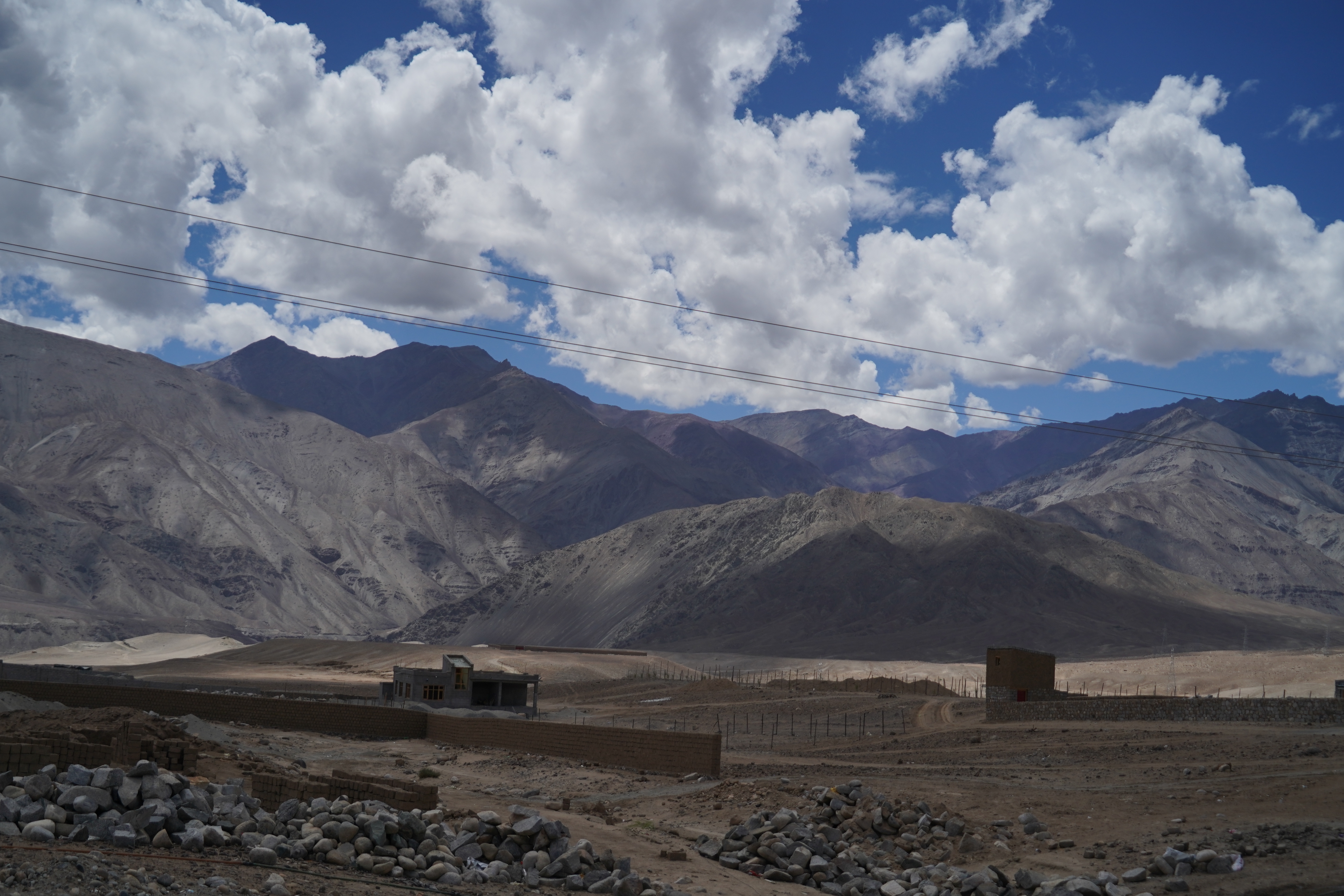
Itinerary
1
Day
Arrival at Leh Airport | Acclimatization Day
2
Day
Leh Sightseeing Day
3
Day
Leh to Nubra Valley (130 Kms) Via Khardung La
4
Day
Nubra to Turtuk (170 Kms) | Last Village of India on Indo-Pak border
5
Day
Nubra Valley to Pangong (180 Kms) Via Diskit Monastery
6
Day
Pangong to Tso-Moriri (180 Kms)
7
Day
Tso- Moriri to Leh (220 Kms) Via Shey Palace and Thiksey Monastery
8
Day
Departure to Leh Airport | Tour Ends
Age Limit (Trip Wise)
Weekend
Getaways
18-38
Himalayan
Treks
18-48
Backpacking
Trips
18-40
Biking
Trips
18-45
Customized
Trips
No Limit
Inclusions & Exclusions
| Inclusions | Exclusions |
Airport Pickup (9:00 AM & 12:00 PM) & Drop (9:00 AM) according to fixed timing Transportation: In Tempo Traveler from Leh to Leh. Himalayan BS6 Bike - For those opting for Himalayan Bikes as a mode of Transportation Bike Rent & Fuel from Leh to Leh. Riding Gears: Knee guard, Elbow guard, Helmet, Riding Glove, Riding Jacket - Level 2. Note: Due to comfort and safety reasons, we recommend you all carry your own Riding Gears for the ride. The Gears which we provide are of standard size so there can be some discrepancies regarding the sizes. Accommodations: On sharing basis as per the itinerary. Meal Plan: MAP Plan (Total 14 Meals - 1 Meal on Day 1 (D) + 2 Meals on Day 2 (B+D) + 2 Meals on Day 3 (B+D) + 2 Meals on Day 4 (B+D) + 2 Meals on Day 5 (B+D) + 2 Meals on Day 6 (B+D) + 2 Meals on Day 7 (B+D) + 1 Meal on Day 8 (B)) Evening Tea/Coffee from Day 3 The Trip Lead will be present at all times during the tour Adventure Medical Insurance - The travel insurance provided will cover the journey from base to base. In this case, the insurance coverage applies specifically from Leh to Leh, excluding any travel before reaching or after departing. Bonfire in Nubra for 1 Night Driver Allowances & Night Charges Backup Vehicle & Spare Parts Mechanical Support Inner Line Permits First Aid Kits Oxygen Cylinders Oximeter | 5% GST Early check-in (Before 1:00 PM) & Late Check-out (After 11:00 AM) at the hotel. Any additional expenses such as personal nature. Additional accommodation/food costs incurred due to any delay in travel. Cost Of Any Spare Part Which Will Be Used Due To The Accidental Damage Incurred When The Motorbike Is In Rider’s Possession. Cost Incurred To Transfer Or Tow The Motorbike In Case It Is Dropped On The Way. Vehicle Servicing Or Maintenance Cost Any lunch and other meals not mentioned in Package Inclusions. Any Airfare / Rail fare other than what is mentioned in “Inclusions” or any type of transportation from Manali or Srinagar. Parking and monument entry fees during sightseeing. Additional Costs due to Flight Cancellations, Landslides, Roadblocks, and other natural calamities. Vehicle servicing or maintenance cost and security deposit per motorbike of Rs. 5,000/-. As per the deposit policy (This is refundable at the end of the trip if there is no damage or spare parts required. The refund would be credited after 7 business days) Any other services not specified above in inclusions. |
Cancellation Policy
| Upto 30 days | 29-21 days | 21-15 days | 14-0 days | |
| Batch Shifting | ||||
| Cancellation Charge | Free Cancellation | 25% of the Trip Amount | 50% of the Trip Amount | 100% of the Trip Amount |
| Booking Amount | Refunded in mode of Credit Note | Adjusted in Refund Deduction | Adjusted in Refund Deduction | No Refund |
| Remaining Amount | Full Refund (minus) booking amount | Refund (minus) 25% of the trip amount | Refund (minus) 50% of the trip amount | No Refund |
Payment Policy
| Upto 30 days | 29-21 days | 20-15 days | 14-7 days | |
|---|---|---|---|---|
| Booking Amount | ||||
| 50% Payment | Optional | Compulsory | ||
| 75% Payment | Optional | Optional | Compulsory | |
| 100% Payment | Optional | Optional | Optional | Compulsory |
Things To Pack
Rucksack:
You must pick a good quality backpack with a comfortable fit and straps that won’t give you shoulder pain. You can check out your nearest Decathlon store for a good trekking backpack.
You must pick a good quality backpack with a comfortable fit and straps that won’t give you shoulder pain. You can check out your nearest Decathlon store for a good trekking backpack.
Day Bag / Day Pack:
When you head towards the summit, you are required to carry only a few necessary items and for that, you need a day backpack as you will leave your bigger one on the campsite.
When you head towards the summit, you are required to carry only a few necessary items and for that, you need a day backpack as you will leave your bigger one on the campsite.
Hiking Shoes :
Durable footwear designed for rugged terrains.
Durable footwear designed for rugged terrains.
Floaters or Sandals:
Although the entire trek requires a good quality shoe, you still need to let your feet breathe to avoid chafing and blisters. When you are at the camp, a good pair of sandals and floaters will help you to move freely.
Although the entire trek requires a good quality shoe, you still need to let your feet breathe to avoid chafing and blisters. When you are at the camp, a good pair of sandals and floaters will help you to move freely.
Tees / Tshirts:
You must keep at least three pairs of quick dry tees so that you can wash them in between stops for proper hygiene.
You must keep at least three pairs of quick dry tees so that you can wash them in between stops for proper hygiene.
Poncho:
A poncho is an evolved form of a raincoat that provides coverage to your body as well as your bag and ensures total water protection from rain.
A poncho is an evolved form of a raincoat that provides coverage to your body as well as your bag and ensures total water protection from rain.
Quick Dry Towel:
A quick dry towel will help in maintaining proper hygiene. It must dry quickly because the wet fabric will only increase the chance of bacterial growth.
A quick dry towel will help in maintaining proper hygiene. It must dry quickly because the wet fabric will only increase the chance of bacterial growth.
Sanitizer:
Essential for maintaining cleanliness while trekking.
Essential for maintaining cleanliness while trekking.
Sun Cap / Hat:
A lightweight sun cap with side flaps is perfect to keep your head cool and avoid sunburns on a sunny day.
A lightweight sun cap with side flaps is perfect to keep your head cool and avoid sunburns on a sunny day.
Sunscreen SPF 40+:
To avoid sunburns and chafing, you need to put on sunscreen as well as cold cream.
To avoid sunburns and chafing, you need to put on sunscreen as well as cold cream.
Water Bottle (Re-usable):
Hydration is extremely important when it comes to trekking. Carrying a water bottle that you can refill with Himalayan water is a must.
Hydration is extremely important when it comes to trekking. Carrying a water bottle that you can refill with Himalayan water is a must.
Personal Toiletries:
A bag with all your essentials including napkins, toothpaste, sanitizers, paper soap, etc should be carried in a ziplock bag.
A bag with all your essentials including napkins, toothpaste, sanitizers, paper soap, etc should be carried in a ziplock bag.
Personal Medication / First Aid:
A few cuts and bruises are almost inevitable when you are on a trek so carrying a medical kit with bandages, Dettol, etc is necessary.
A few cuts and bruises are almost inevitable when you are on a trek so carrying a medical kit with bandages, Dettol, etc is necessary.
Sun Glasses / Reading Glasses:
Photochromatic glasses are specs that are designed to transform into anti-glare shades depending upon exposure to the sun. They are good when it comes to eye protection but one can also opt for clip-on glasses etc.
Photochromatic glasses are specs that are designed to transform into anti-glare shades depending upon exposure to the sun. They are good when it comes to eye protection but one can also opt for clip-on glasses etc.
Charger:
To keep your electronic devices powered during the trip.
To keep your electronic devices powered during the trip.
Power Bank:
Ensures your devices stay charged when there are no outlets.
Ensures your devices stay charged when there are no outlets.
Personal Documents & ID's:
Identification proofs like Aadhar Card, Drivers License.
Identification proofs like Aadhar Card, Drivers License.
Laundry Bag (Waterproof):
In case your clothes get wet or your garments don’t dry, you can carry them in polythene. However, make sure that all the plastic that you are carrying into the woods leaves with you. Don’t litter in the mountains.
In case your clothes get wet or your garments don’t dry, you can carry them in polythene. However, make sure that all the plastic that you are carrying into the woods leaves with you. Don’t litter in the mountains.
Track Pants:
A good pair of track pants made of polyester will let your skin breathe. They’re lightweight, dry easily, and comfortable to walk around in. You can easily avoid chafing and rashes by investing in a good pair of track pants.
A good pair of track pants made of polyester will let your skin breathe. They’re lightweight, dry easily, and comfortable to walk around in. You can easily avoid chafing and rashes by investing in a good pair of track pants.
Trekking Shoes:
A good trekking shoe is comfortable, provides ankle support, and has a good grip as well. They shouldn’t be chunky, instead, they should be lightweight and sturdy.
A good trekking shoe is comfortable, provides ankle support, and has a good grip as well. They shouldn’t be chunky, instead, they should be lightweight and sturdy.
Cotton Socks:
Cotton socks are extremely comfortable to move around in and are lightweight as well which is why you can always count on a good pair of cotton socks while trekking. However, keep in mind to change them and avoid wearing them when they are wet.
Cotton socks are extremely comfortable to move around in and are lightweight as well which is why you can always count on a good pair of cotton socks while trekking. However, keep in mind to change them and avoid wearing them when they are wet.
Woolen Socks:
A good pair of woolen socks, especially merino, are comfortable, limit odors and provide adequate insulation from the cold so you can wear them at night.
A good pair of woolen socks, especially merino, are comfortable, limit odors and provide adequate insulation from the cold so you can wear them at night.
Woolen Gloves:
Insulated gloves help in maintaining proper body heat in your hands and also provide a better grasp on trekking poles.
Insulated gloves help in maintaining proper body heat in your hands and also provide a better grasp on trekking poles.
Main Jacket:
It’s emphasized that you need to carry proper layers so you can avoid getting cold which is why you need to carry a heavy jacket that you can put on over your other clothes.
It’s emphasized that you need to carry proper layers so you can avoid getting cold which is why you need to carry a heavy jacket that you can put on over your other clothes.
Woolen Cap:
A woolen cap will help prevent cold when you ascend to high altitude. You can also cover your ears to avoid any pain and discomfort you might face in them when going at high altitudes.
A woolen cap will help prevent cold when you ascend to high altitude. You can also cover your ears to avoid any pain and discomfort you might face in them when going at high altitudes.
Hoodie:
A versatile layering option for various temperatures.
A versatile layering option for various temperatures.
Scarf / Balaclava:
Along with sun rays and chilly winds, you also get hit by dirt and grime during treks which is why it's important to carry a scarf or balaclava so you can cover your face when needed.
Along with sun rays and chilly winds, you also get hit by dirt and grime during treks which is why it's important to carry a scarf or balaclava so you can cover your face when needed.
Head Lamp:
You can’t rely on moonlight when you are in the mountains. A torch or even a headlamp with a fresh pair of batteries is always a good idea to bring along.
You can’t rely on moonlight when you are in the mountains. A torch or even a headlamp with a fresh pair of batteries is always a good idea to bring along.
Trekking Pole:
The trekking pole assists in more than one way. It saves energy while also providing stability and helps you to maintain proper balance.
The trekking pole assists in more than one way. It saves energy while also providing stability and helps you to maintain proper balance.
Camera:
This should be obvious. To make sure that you get to capture all the great moments from your trek. Make sure that you have enough storage and some extra batteries as well.
This should be obvious. To make sure that you get to capture all the great moments from your trek. Make sure that you have enough storage and some extra batteries as well.
Riding Gear:
If your trip involves biking or motorcycling.
If your trip involves biking or motorcycling.
Moisturiser & Cold Cream:
To avoid sunburns and chafing, you need to put on sunscreen as well as cold cream.
To avoid sunburns and chafing, you need to put on sunscreen as well as cold cream.
Lip Balm:
Your lips can become chapped due to the harsh cold winds so it's important to keep them moisturized.
Your lips can become chapped due to the harsh cold winds so it's important to keep them moisturized.
Sanitary Pads:
Essential for feminine hygiene.
Essential for feminine hygiene.
Insect Repellent:
Guards against pesky bugs and insects.
Guards against pesky bugs and insects.
Cash:
Emergency funds for unexpected situations.
Emergency funds for unexpected situations.
Thermals:
Thermal is a piece of garment that helps in keeping your body warm in cold temperatures. It is a necessary item that you need when going on a high-altitude trek.
Thermal is a piece of garment that helps in keeping your body warm in cold temperatures. It is a necessary item that you need when going on a high-altitude trek.
Snacks / Dryfruits / Energy Bar:
Provides quick energy on the go.
Provides quick energy on the go.
Positive Attitude:
The most important item for a successful trek or trip, keeping your spirits high and adaptable to the challenges of the journey.
The most important item for a successful trek or trip, keeping your spirits high and adaptable to the challenges of the journey.
FAQs
What are the options for restaurants and eateries in Leh Ladakh?
There are several restaurant options available in Leh. Depending on the kind of food you want to eat. The authentic cuisine includes Chhurpi (Cheese made out of Yak Milk), Gur Gur Chai (Butter Tea), Mokhtuk, Thukpa, Tingmo, etc. If we were to recommend, we'd recommend the combo of Tea and Maggi at the world's highest Maggi Point en route Khardung La Pass. If you want to have a taste of the best Tibetan food, then you can go to The Tibetan Kitchen. Restaurants like Lamayuru, Andrew, Bon Appetit serve north Indian food for those who don't want to experiment and have the taste of food that reminds them of home. There are lots of cafes that you can explore in Leh Market. However, make sure to carry dry snacks when traveling to Nubra and further because you won't find many outlets there.
What kind of clothes should we pack for Ladakh?
The temperature in Ladakh ranges from 10-14 degrees Celsius during the day and can drop down even below zero degrees Celsius at night and thus it is recommended to carry enough woolen clothes. A fleece jacket, pullover, and at least 3 layers of clothing are a must when traveling to Ladakh, not to forget socks, head covers, mufflers, gloves, and body warmers. Since rain is frequent in the mountains you shall also carry a raincoat or a poncho.
You can check out a detailed list of Ladakh Travel essentials here: https://www.justwravel.com/blog/things-to-pack-for-leh-ladakh-travel-essentials/
Do we have to carry cash or are there ATM’s in Ladakh?
There are many regions in Ladakh where you won't find ATMS. The network is poor as well and hence you can't rely on online payments either which is why it is recommended to carry cash. There are a few scattered ATMs in Leh and one or two in Kargil, apart from that it is rare to find one, and thus carrying cash is the only way to have hassle-free transactions.
Which Mobile Network Works Well in Ladakh?
Prepaid connections don’t work in Ladakh. When it comes to mobile network providers, you can only rely on Airtel. BSNL and Jio. Here are some regions with the respective network that you can expect here:
Leh: Airtel, BSNL, and Jio users have good connectivity here.
Nubra: Jio and BSNL users get decent connectivity here.
Diskit: Jio gets decent connectivity while Airtel gets 2G/3G reception.
Zanskar: BSNL gets decent connectivity.
Drass: BSNL gets decent connectivity.
Kargil: Jio and BSNL get decent connectivity.
What are the best Souvenirs to buy from Leh Market?
Popular items that you can invest in when on a shopping spree in Leh include Pashmina shawls, stoles, and other Pashmina woolen garments. Handmade woolen socks, gloves, caps, and sweaters are a favorite of tourists in Ladakh. Authentic Tibetan handicrafts are also popular among those who like collecting souvenirs. Apart from these, some things that won't regret getting in Leh are apricots, Thangka Paintings, Prayer wheels, Prayer flags, Magnets, and others.
Can I take my Laptop to Leh Ladakh?
Yes, you can surely carry your Laptop on the Ladakh trip. But you will have to take care of your own belongings.
Note: The new generation laptops are manufactured by solid state drives, they will work fine. While in the case of old-style laptops, a Hard drive may suffer a crash or data loss at an altitude of 10,000 feet and above.
What is the best time to go to Ladakh?
The best time to visit Leh Ladakh is from mid-May to mid-October when the weather is warm and the roads are open, making it ideal for activities like trekking, sightseeing, and cultural festivals. The shoulder season from April to June and September to October offers fewer crowds, milder temperatures, and discounted rates. While the off-season from November to March has very cold temperatures and the risk of road closures, it can still be a good time to visit for winter activities like skiing and attending monastery festivals.
READ MORE: Month Wise Best Time to Visit Leh Ladakh
How long does it take one to get acclimatized in Ladakh?
The time taken to acclimatize may vary from person to person. You are traveling to a height of around 3500 meters. In most cases, people abruptly feel the changes while some people will acclimatize easily. For some people, it can take the whole first day. But in case of flying in, we do recommend 1-day of complete rest in Leh. Additionally, for precautionary measures, one needs to spend at least 24-48 hours at rest in Leh to get acclimatized properly.
Does it get difficult to breathe in Ladakh?
Nestled at an elevation of almost 11,500 ft Ladakh is a high-altitude region and if you're traveling from the plains, then you will start to face some difficulty as the atmospheric pressure drops. As a result, there is less oxygen in the air the higher you go. You might get hit by a wave of AMS (Acute Mountain Sickness) where your symptoms would breathlessness would be a major symptom while the other symptoms would include headache, nausea, vomiting, indigestion, and more. It is important to keep drinking water and give your body at least a day so that it can get acclimatized properly.
Read more about AMS here: https://www.justwravel.com/blog/a-guide-to-ams/
Is this trip mainly focused on biking, or can I choose a Tempo Traveler instead?
Certainly! At JustWravel, we understand Ladakh's allure, and we offer options to suit your preferences. Whether you are drawn to the thrill of biking or prefer the ease of a Tempo Traveler, the decision is entirely yours. In Ladakh, you have the option to either ride through its stunning landscapes on a bike or relax in the Tempo Traveler while constantly looking out for the majestic views.
Which option is preferable, biking or Tempo Traveler for Ladakh?
Both biking and traveling via Tempo Traveler offer distinct experiences. In Ladakh, regardless of your chosen mode of transport, the itinerary, destinations, and activities remain same. However, your choice may depend on factors like your physical condition, comfort preferences, and overall health. Rest assured, each aspect of your journey is carefully planned to ensure an unforgettable adventure in Ladakh.
What kind of wildlife can you witness on your Ladakh tour?
The Ladakh region is home to diverse wildlife that has adapted to the harsh, high-altitude environment. Some of the key wildlife species you can witness on a Ladakh tour include the snow leopard, Asiatic ibex, Tibetan antelope, Ladakh urial, and Himalayan brown bear. Additionally, the region is also home to the critically endangered black-necked crane and the massive lammergeier. The Changthang Wildlife Sanctuary and Hemis National Park are considered prime spots for wildlife viewing in Ladakh.
READ MORE: Wildlife in Ladakh
What are the five irresistible highlights of a Ladakh bike trip?
A Ladakh bike trip offers pristine natural beauty and freedom, allowing riders to soak in breathtaking landscapes. With rewarding riding conditions, the diverse terrains challenge and exhilarate bikers alike. The journey also provides rich cultural immersion, giving a deep insight into the local traditions and communities. Lastly, the adrenaline-pumping thrills of high-altitude rides foster unmatched camaraderie among fellow bikers, creating lasting friendships on the road.
READ MORE: Irresistible Highlights of Ladakh Bike Trip
Which are the must-visit lakes in Ladakh?
The must-visit lakes in Ladakh are Pangong Tso, Tso Moriri, Tso Kar, and Mirpal Tso. Pangong Tso is the most famous for its stunning turquoise waters and mountain scenery. Tso Moriri is the largest high-altitude lake, known for its serene beauty and migratory birds. Tso Kar is a twin lake with both saltwater and freshwater, offering excellent birdwatching opportunities. Mirpal Tso is a lesser-known but beautiful high-altitude lake in the Chushul region.
Explore More: Best Lakes of Ladakh
What monasteries should you visit on your Ladakh Tour?
The top monasteries to visit in Ladakh are Hemis, Lamayuru, Thiksey, and Alchi. Hemis is the largest and most famous, known for its impressive architecture, artifacts, and annual festival. Lamayuru is one of the oldest, situated in a picturesque lunar landscape. Thiksey resembles the Potala Palace and houses a massive Maitreya Buddha statue. Alchi is a UNESCO site with well-preserved 11th century wall paintings showcasing Kashmiri-influenced Tibetan Buddhist art.
Suggested Read: Monasteries of Ladakh
What are the packing tips for a Ladakh Tour?
Warm clothing is essential, as Ladakh has a cold desert climate. Pack layers like jackets, sweaters, woolen socks, and thermal wear to stay comfortable in the chilly temperatures. Bring sun protection gear such as sunglasses, sunscreen, and lip balm, as the high altitude and intense sun can damage skin. Include a basic medical kit with medicines for altitude sickness, headaches, stomach issues, and other common ailments. Pack necessary documents like ID cards, permits, and travel insurance, as well as chargers, power banks, and extra camera memory cards.
Extended Read: Things Not to Pack for Leh Ladakh Trip
Suggest some adventure activities that I can do in Ladakh
Ladakh being one of the high-altitude regions is a perfect spot for adventure activities including trekking, mountaineering, ice climbing, quad biking, camel safaris, and even archery. A visit to Ladakh will be incomplete without experiencing any of these adventure activities.
READ MORE: Adventure Activities to do in Ladakh
What are the reasons for visiting Leh Ladakh?
Leh Ladakh offers breathtaking natural beauty with towering snow-capped peaks, crystal-clear blue lakes, and vast barren landscapes. The region is rich in unique culture and traditions, with colorful festivals, ancient monasteries, and traditional music and dance. Leh Ladakh is an adventure playground with thrilling activities like trekking, mountaineering, river rafting, and mountain biking. The high-altitude lakes, serene monasteries, and commitment to eco-tourism make Leh Ladakh a must-visit destination for nature lovers, culture enthusiasts, and adventure seekers alike.
Know why: Reasons to Visit Leh Ladakh
Everything you need to know about Ladakh
If you are planning a Leh Ladakh Tour, numerous questions will keep coming to your mind. A trip to Ladakh is different from other destinations because of its uniqueness and adventurous side.
Ladakh, the Land of High Passes, is a recently designated Union Territory in India that was previously a part of Jammu & Kashmir. Its scenery is awe-inspiring, with mountains, snow, cold desert, alpine meadows, and lakes all nearby, providing a unique and dramatic landscape. The challenging terrain of Leh Ladakh in the Himalayas invites you to experience a completely new way of life. This place is awe-inspiring and breathtaking due to its purity, which can awaken something within you. Leh is a small town that epitomizes a mountain town, with its stunning beauty and humble, loving locals.
For nature lovers and adventurers alike, tourism in Ladakh offers an incredible experience. Ladakh, with its towering barren mountains, is known for having some of the highest motorable passes such as Khardung La (5359 m), Marsimik La (5582 m), and Chang La (5360 m), as well as picturesque alpine lakes like Pangong Tso (4350 m) and Tso Moriri (4522 m). The region of Ladakh is divided into three parts - Leh, Nubra, and Zanskar, each offering a variety of attractions to explore. The region of Leh and Ladakh exemplifies organized simplicity. Ladakh offers not just mesmerizing landscapes and adventure, but also a focused lifestyle that promotes contentment and fulfillment. Traveling to Ladakh through this Itinerary allows you to escape the rat race of everyday life and appreciate the true essence of living on Earth. When searching for Ladakh tour packages online, the desire for adventure naturally grows. This destination ignites excitement and offers a life-changing experience.
Here is everything you need to know about Leh Ladakh:
How to Reach Leh Ladakh
The Indian winter paradise of Ladakh is one of the most valued travel destinations for both nature lovers and thrill-seekers. Mountain bikers, trekkers, and hikers will love this spot. Ladakh, which is 3,001 meters above sea level, appears otherworldly with its surrounding peaks, valleys, ancient monasteries, and alpine lakes.
By Road - Despite its high elevation, major Indian towns like Srinagar in Jammu & Kashmir and Manali in Himachal Pradesh have good road connections to Ladakh. The fact remains, though, that individuals can only schedule their road travel during the first six months of the year because snowfall keeps the roads closed the rest of the time.
Biker favorite route 1 is from Manali to Leh. The Manali to Leh route is superior, more practical, and has some of the nicest views along the way. Leh is around 490 kilometers from Manali.
Route 1- Manali-Rohtang-Gramphu-Kokhsar-Keylong-Jispa-Darcha-Zingzingbar-Baralacha La-Bharatpur-Sargu-Gata Loops-Nakee La-Lachulung La-Pang-Tanglang La-Gya-Upshi-Kuru-Leh
Route 2: The roadway between Srinagar and Leh is less often traveled.
Srinagar – Sonmarg – Zozi La – Drass – Kargil – Mulbek – Lamayaru – Saspol – Leh
By Air - Air travel is one of the most convenient and pleasant methods to go to Ladakh. There are several airlines that offer direct flights to Ladakh. The Kushok Bakula Rimpochee Airport in Leh is the closest airport to the city.
Best Time to Visit Leh Ladakh
The best time to visit Leh Ladakh is from May to September. The beautiful weather and open roads to Leh make it easier to get there during this time of year.
Summer (May to September): With its pleasant temperatures and beautiful skies, summer is Leh Ladakh's busiest travel season. Visitors can experience the region's breathtaking landscapes since the majority of the routes, including high-altitude crossings and famous lakes like Pangong Tso and Tso Moriri, are open. Adventure seekers come from all over the world to participate in outdoor activities like white-water rafting, trekking, and camping because of the perfect weather.
Spring (Late April to Early May): As temperatures progressively rise and the snow starts to melt, spring signals the start of the tourist season. With snow-capped peaks in the background, the landscape comes to life with flowering flowers, even though certain higher passes may still be unreachable early in the season. Less people visit around this time, so it's ideal for individuals looking for a peaceful experience.
Autumn (late September to October): With crisper weather and colorful scenery, autumn showcases Leh Ladakh in all its splendor. Winter is coming, but the days are still nice and the nights are starting to grow chilly. Even while certain tourist attractions might close by the end of October, most attractions are still open, and there are comparatively fewer people around, making it a great time for a quiet vacation.
Winter (November to April): Because of the intense cold and a lot of snowfall, which cause road closures, particularly in higher-altitude places, winter is the off-season for tourists in Leh Ladakh. snow, however, offers special chances for those seeking adventure, such as going on snow trekking and attending customary celebrations like Losar. Even if there aren't as many amenities available, visiting Leh Ladakh in all of its icy beauty may be an unforgettable experience.
The Best Places to Visit in Ladakh
Nubra Valley - Nubra, a deep gorge created by the Shyok and Siachen Rivers, is without a doubt one of the top tourist destinations in Ladakh. In addition to being the starting point for some of the highest regions, such Siachen Glacier, it is also the location of the hot springs at Panamik settlement, the old monasteries, the sand dunes of Hunder, and the settlement split along a boundary.
Pangong Tso - One of the most well-liked and fantastic locations to visit in Ladakh is Pangong Lake, which is the highest saltwater lake in the world. Several scenes from the films 3 Idiots, Jab Tak hai Jaan, and many more were filmed there as well.
Lamayuru - Tradition has it that the Yuru Gompa, commonly referred to as the "eternal monastery," was the first Bon Monastery to be built in Ladakh.
Shanti Stupa - Ladakhi and Japanese Buddhists collaborated to construct the Shanti Stupa. This white-domed structure, perched atop a hill, is a popular tourist destination in Ladakh and is said to contain Buddha relics.
Khardung La Pass - One of the highest motorable passes in the world, the Khardung La Pass serves as a gateway to Ladakh's Nubra and Shyok Valleys.
Magnetic Hill - Magnetic Hill is a picturesque and captivating route that runs next to the Sindhu river.When you park your car in the designated white box on the road, the vehicle will begin to ascend at a rate of twenty kilometers per hour on its own. The phenomenon piques travelers' curiosity and is the subject of numerous mythology.
Tso Moriri - Tso Moriri is undoubtedly at the top of the list when it comes to Ladakh tourist destinations. Tso Moriri, the region's largest lake, is a lesser-known paradise hidden among Ladakh's high mountains. Measuring around 26 km in length and 8 km in width, it's one of the region's hidden treasures!
Diskit Gompa - One of the main draws for tourists visiting Nubra Valley is the 108-foot-tall Maitreya Buddha statue, which stands guard over the Shyok River. It was constructed to uphold the ideals of harmony and serenity as well as to keep evil out of Diskit Village.
Hanle - Hanle, another breathtakingly gorgeous location in Ladakh, is literally heaven for all astronomy enthusiasts. Situated around 250 kilometers from Leh on the historic India-Tibetan trade route, it is the site of the Indian Astronomical Observatory and one of the oldest monasteries constructed in the Indo-Chinese style.
Turtuk - Located at the northernmost point of Nubra beside the Shyok River, Turtuk is the final settlement situated in the Baltistan region along the boundary between India and Pakistan. For the Indian Army, this region is crucial since it serves as the entrance to Siachen Glacier. One of the best spots to visit in Ladakh is its apricot-laden orchards, lush plains, pure river banks, and captivating history.
Umling La - The world's highest motorable pass, Umling La, has been built by BRO (Border Roads Organization), surpassing national expectations once again and surpassing Khardung La and Mana Pass in Uttarakhand. Constructed as part of "Project Himank," the 19,300-foot road trip is sure to leave you feeling amazed, ecstatic, and full of adrenaline.
READ MORE: THE BEST PLACES TO VISIT IN LADAKH
https://www.justwravel.com/blog/best-places-to-visit-in-ladakh
Things to do in Leh Ladakh
From trekking to river rafting, there is a wide variety of activities you can do in Ladakh. To make the most out of your Leh Ladakh Tour, it is recommended for you to indulge in some of these activities.
Camel Safari In Ladakh - The sand dunes of Hunder, located in the Nubra Valley, have acquired the nickname "desert in the sky." Experience a safari on a double-humped Bactrian camel, which was formerly an essential component of the caravans.
Where to do: Nubra Valley
Mountain Biking in Ladakh - Experience the abundance of Ladakh on a mountain bike; you won't be disappointed to find some of the most captivating and seductive scenery.
Where to do: You can do the whole Ladakh circuit on Bike
River Rafting in Ladakh - Have a go at river rafting. The Indus in the Leh area, the Zanskar in Zanskar, and the Shayok in Nubra. Rafting the Zanskar River is a fun and thrilling experience.
Where to do: Zanskar River
Trekking in Ladakh - There are a plethora of breathtaking scenery in Ladakh that can leave one spellbound. It is also the ideal location for hikers. featuring some amazing vistas and routes that will change your perception of adventure.
Where to do: Lumayuru to Darcha trek, Ripchar Valley trek, Padum to Darcha trek, Lumayuru to Alchi trek, Lumayuru Stok Kangri and Markha Valley trek.
Quad Biking - You simply must go quad biking while visiting the Nubra Valley, often known as the adventure valley. The ideal approach to up the ante on your Leh Ladakh tour package excursion is to go quad biking for 45 minutes.
Where to do: Nubra Valley
High Passes of Ladakh
Ladakh is called the land of high passes for a reason. The whole region is blessed with passes that are capable of raising your adreline. Here are the famous passes of Ladakh that you can’t miss.
- Namik La (12,198 feet) - Located on the Srinagar Leh highway
- Zoji La (12,400 feet) - Zoji La means Mountain pass of Blizzards
- Fotu La pass (13,479 feet) - Lies on the Srinagar Leh circuit and is higher than the Zojila pass
- Nakee La (15,547 feet) - Third and one of the highest mountain passes between Leh to Manali.
- Baralacha La (16,400 feet) - Baralacha La has a summit with crossroads from Spiti, Ladakh, Zanskar, and Lahaul
- Khardung La pass (17,582) - Once considered to be the highest motorable road in the world
- Taglang La (17,583) - It's a beautiful journey, so make sure to stop at the pass for sweeping vistas.
- Chang La (17,585 feet) - You will encounter this pass while traveling to Pangong Tso
- Marsimik La (18,953 feet) - It is located 20 kilometers from the stunning Pangong Tso in the Chang-Chemno range.
- Umlingla Pass (19,300 feet) - Highest motorable road in India
READ MORE ABOUT HIGH PASSES OF LADAKH
https://www.justwravel.com/blog/high-passes-of-ladakh-that-bikers-love
VIDEOS
Memories for Life
posts
Instagram Images
REVIEWS
What our Clients Say About Us
blogs
Our Blogs
TRIPS
Related Trips

.webp)
.png)


Leh Ladakh Tour with Tso Moriri and Turtuk
Details
Inclusions
Safe Travel
Flexible Cancellation
Easy EMI
Certified Captains
24/7 Support
Overview
A road trip to Leh-Ladakh is something a traveler has on top of their priority list. Popularly known as the “Land of High Passes”, Ladakh provides a wide range of opportunities for adventure enthusiasts. Nestled as its capital, the town of Leh has been a significant part of Ladakh's history and still continues to be extremely popular among travelers. From serving as the stop point for trade routes along the Indus Valley and also between India and China for centuries to now being the bridge that connects distinct cultures, Leh is a fascinating town brimming with diversity and heritage.
In this road trip to Ladakh, we traverse through many destinations that are not only major attractions but carry the essence of Ladakh in their very walls. From Buddhist monasteries that have preserved ancient relics and thangka paintings to the iconic motorable high passes that attract riders from all over the country, this Leh-Ladakh tour is specially curated to provide you the thrill you seek as well as give you a glimpse at the serenity that the beautiful valleys of Ladakh have to offer.
This trip starts from our arrival at Leh. Since the altitude is high and weather conditions are harsher compared to plain regions, it's necessary to allow your body to get acclimatized properly. Spending a day in Leh is a crucial part of this Ladakh road trip. Since the ascend isn't gradual, many travelers face certain health-related issues when they embark on this journey but you won't have to worry if you let your body adapt to the conditions.
After spending a night under the starry skies, you will perhaps realize what you were missing out on while stuck in the daily hustle and bustle of your life in the metropolitan cities where the air isn't quite as fresh as the one that billows in the heart of Ladakh. Our first stop for the Leh sightseeing in this Ladakh road trip would be none other than the confluence of Zanskar and Indus rivers, locally known as Sangam, located at Nimmu on the Leh-Srinagar highway. Indus, also known as the Sindhu river, is the main source of water for the entire valley when it comes to irrigation practices. The blue waters surrounded by the earthly brown hues of the mountain blend together to offer a view that is not only pleasing to the eyes but fill your heart with awe as you witness nature work its magic.
Other tourist attractions in Ladakh that we make sure you must visit include the Gurudwara Pathar Sahib, a beautiful Gurudwara built in memory of Guru Nanak Sahib in 1517. It is a sacred belief in Sikhism that Guru Nanak Dev traveled to many places during his lifetime and one of those places was Tibet. Even the Buddhists of this region consider him to be a Saint and call him by the name of Guru Gompka Maharaj. The next stop during the local sightseeing tour in this Ladakh road trip is the Magnetic Hill. It has gained popularity for its gravity-defying phenomena. At a staggering height of 14,000ft, the uphill slopes seem to pull the vehicles upwards even if you wish to drive in the opposite direction. A board marks the location of the hill so you can't miss it when driving on the roads of Leh. What makes these cyclops hills even more interesting is that the locals believe that the road is a gateway to heaven. One of the major attractions in Ladakh is perhaps the most symbolic embodiment of courage and valor. The Hall of Fame, a memorial constructed by the Indian Army to honor the legacy of the Indian soldiers who lost their lives during the many wars that occurred post-partition. The museum has a wall named “The last post” where the last letter written by Captain Vijayant Thapar before his martyrdom is preserved in the frame. Simply being here, surrounded by the history of our soldiers and how they lived their lives, how they sacrificed it will surely leave you feeling overwhelmed and teary-eyed.
The next stop in our Ladakh road trip will provide you with some much-needed peace of mind. The Shanti Stupa is a beautiful white-domed structure that holds ancient relics of Buddha in its embrace. Apart from being the abode to such notable emblems of Buddhist culture, it is also enshrined by the 14th Dalai Lama himself. It has gained popularity not just because of its spiritual significance but the scenic view that is in the backdrop of the Stupa.
We won't confine ourselves to Leh in this Leh-Ladakh road trip but explore the many valleys and villages the travelers paradise has to offer. We will make a small trip to Nubra valley from Leh first. In Tibetan, Nubra is called Dumra which means valley of flowers and the name perfectly suits the vast expanse of land that stretches like a blooming spring field. The best part about this mini road trip from Leh to Nubra is that you'll be traversing through Khardung La pass which is one of the highest motorable passes in the world, with a staggering height of 18,379 ft. The pass is a gateway to the Shyok and Nubra valleys. Adventure enthusiasts from across the world come on this pass to experience the thrill of riding their bikes at high altitudes. You can also indulge in exciting activities like Double Hump Bactrian Camel safari, ATV rides, and more. One of the coolest things about this 7-day road trip is that this Ladakh tour comes with an expedition to Turtuk. Turtuk is India's last outpost and was once a part of Pakistan before the Indian Army captured it during the war of 1971. This road trip to Ladakh becomes perfect when you spend some time in Turtuk which is known for its variety of fruits, especially apricots.
The next destination would be Pangong Lake, a name you might be familiar with if you are into pop culture specifically Bollywood. The lake was featured in the iconic scene in the blockbuster Bollywood movie 3 Idiots. It has also been featured in some popular Shah Rukh Khan flicks like Jab tak hai Jaan and Dil se. Apart from being a treat to the eyes with its pristine blue waters, what makes the lake interesting is that it doesn't allow outflow to any other water bodies. En route to Pangong while on this Ladakh road trip, we will make a stop to pay our respects at the Diskit Monastery which is the oldest and the largest monastery in Leh. It is known for the 106 ft tall statue of Buddha that is perched on top of the hill. The Monastery has its roots dating back to the 14th century with frescos and paintings depicting ancient tales of Buddhist culture. After our day's excursion, we will set up cottages in Pangong Lake in the backdrop. A night with starry skies and a soothing breeze would give you the peace of mind that metropolitan cities have deprived us of. The next stop of our Ladakh tour would be Tso Moriri. Situated at an altitude of 14,836 ft, it is one of the largest high-altitude lakes in the trans-Himalayan region as well as in India. The water of the lake is alkaline and the lake itself is one of the remnant lakes which means that it used to be a part of significant structural lakes. In a nutshell, this Leh road trip with Tso Moriri and Turtuk is one of a kind that covers the majority of attractions in Ladakh and makes the experience the perfect blend of thrill and peace.
Itinerary
1
Day
Arrival at Leh Airport | Acclimatization Day
2
Day
Leh Sightseeing Day
3
Day
Leh to Nubra Valley (130 Kms) Via Khardung La
4
Day
Nubra to Turtuk (170 Kms) | Last Village of India on Indo-Pak border
5
Day
Nubra Valley to Pangong (180 Kms) Via Diskit Monastery
6
Day
Pangong to Tso-Moriri (180 Kms)
7
Day
Tso- Moriri to Leh (220 Kms) Via Shey Palace and Thiksey Monastery
8
Day
Departure to Leh Airport | Tour Ends
Age Limit (Trip Wise)
Weekend
Getaways
18-38
Himalayan
Treks
18-48
Backpacking
Trips
18-40
Biking
Trips
18-45
Customized
Trips
No Limit
Ride Like a Pro with JustWravel!
Himalayas? Conquered. Safety? Guaranteed.
Pricing
Select Occupancy
+5% GST *
Batches
Airport Pickup (9:00 AM & 12:00 PM) & Drop (9:00 AM) according to fixed timing Transportation: In Tempo Traveler from Leh to Leh. Himalayan BS6 Bike - For those opting for Himalayan Bikes as a mode of Transportation Bike Rent & Fuel from Leh to Leh. Riding Gears: Knee guard, Elbow guard, Helmet, Riding Glove, Riding Jacket - Level 2. Note: Due to comfort and safety reasons, we recommend you all carry your own Riding Gears for the ride. The Gears which we provide are of standard size so there can be some discrepancies regarding the sizes. Accommodations: On sharing basis as per the itinerary. Meal Plan: MAP Plan (Total 14 Meals - 1 Meal on Day 1 (D) + 2 Meals on Day 2 (B+D) + 2 Meals on Day 3 (B+D) + 2 Meals on Day 4 (B+D) + 2 Meals on Day 5 (B+D) + 2 Meals on Day 6 (B+D) + 2 Meals on Day 7 (B+D) + 1 Meal on Day 8 (B)) Evening Tea/Coffee from Day 3 The Trip Lead will be present at all times during the tour Adventure Medical Insurance - The travel insurance provided will cover the journey from base to base. In this case, the insurance coverage applies specifically from Leh to Leh, excluding any travel before reaching or after departing. Bonfire in Nubra for 1 Night Driver Allowances & Night Charges Backup Vehicle & Spare Parts Mechanical Support Inner Line Permits First Aid Kits Oxygen Cylinders Oximeter |
Cancellation Policy
Credit Note :
The Booking Amount will be credited to your JW Profile which can be accessed by logging in to the website through your Email ID. Credit Notes issued have no date of expiry and can be used entirely in any of your future trips.
GST :
The Booking Amount will be credited to your JW Profile which can be accessed by logging in to the website through your Email ID. Credit Notes issued have no date of expiry and can be used entirely in any of your future trips.
Payment Policy
Things To Pack
Rucksack:
You must pick a good quality backpack with a comfortable fit and straps that won’t give you shoulder pain. You can check out your nearest Decathlon store for a good trekking backpack.
You must pick a good quality backpack with a comfortable fit and straps that won’t give you shoulder pain. You can check out your nearest Decathlon store for a good trekking backpack.
Day Bag / Day Pack:
When you head towards the summit, you are required to carry only a few necessary items and for that, you need a day backpack as you will leave your bigger one on the campsite.
When you head towards the summit, you are required to carry only a few necessary items and for that, you need a day backpack as you will leave your bigger one on the campsite.
Hiking Shoes :
Durable footwear designed for rugged terrains.
Durable footwear designed for rugged terrains.
Floaters or Sandals:
Although the entire trek requires a good quality shoe, you still need to let your feet breathe to avoid chafing and blisters. When you are at the camp, a good pair of sandals and floaters will help you to move freely.
Although the entire trek requires a good quality shoe, you still need to let your feet breathe to avoid chafing and blisters. When you are at the camp, a good pair of sandals and floaters will help you to move freely.
Tees / Tshirts:
You must keep at least three pairs of quick dry tees so that you can wash them in between stops for proper hygiene.
You must keep at least three pairs of quick dry tees so that you can wash them in between stops for proper hygiene.
Poncho:
A poncho is an evolved form of a raincoat that provides coverage to your body as well as your bag and ensures total water protection from rain.
A poncho is an evolved form of a raincoat that provides coverage to your body as well as your bag and ensures total water protection from rain.
Quick Dry Towel:
A quick dry towel will help in maintaining proper hygiene. It must dry quickly because the wet fabric will only increase the chance of bacterial growth.
A quick dry towel will help in maintaining proper hygiene. It must dry quickly because the wet fabric will only increase the chance of bacterial growth.
Sanitizer:
Essential for maintaining cleanliness while trekking.
Essential for maintaining cleanliness while trekking.
Sun Cap / Hat:
A lightweight sun cap with side flaps is perfect to keep your head cool and avoid sunburns on a sunny day.
A lightweight sun cap with side flaps is perfect to keep your head cool and avoid sunburns on a sunny day.
Sunscreen SPF 40+:
To avoid sunburns and chafing, you need to put on sunscreen as well as cold cream.
To avoid sunburns and chafing, you need to put on sunscreen as well as cold cream.
Water Bottle (Re-usable):
Hydration is extremely important when it comes to trekking. Carrying a water bottle that you can refill with Himalayan water is a must.
Hydration is extremely important when it comes to trekking. Carrying a water bottle that you can refill with Himalayan water is a must.
Personal Toiletries:
A bag with all your essentials including napkins, toothpaste, sanitizers, paper soap, etc should be carried in a ziplock bag.
A bag with all your essentials including napkins, toothpaste, sanitizers, paper soap, etc should be carried in a ziplock bag.
Personal Medication / First Aid:
A few cuts and bruises are almost inevitable when you are on a trek so carrying a medical kit with bandages, Dettol, etc is necessary.
A few cuts and bruises are almost inevitable when you are on a trek so carrying a medical kit with bandages, Dettol, etc is necessary.
Sun Glasses / Reading Glasses:
Photochromatic glasses are specs that are designed to transform into anti-glare shades depending upon exposure to the sun. They are good when it comes to eye protection but one can also opt for clip-on glasses etc.
Photochromatic glasses are specs that are designed to transform into anti-glare shades depending upon exposure to the sun. They are good when it comes to eye protection but one can also opt for clip-on glasses etc.
Charger:
To keep your electronic devices powered during the trip.
To keep your electronic devices powered during the trip.
Power Bank:
Ensures your devices stay charged when there are no outlets.
Ensures your devices stay charged when there are no outlets.
Personal Documents & ID's:
Identification proofs like Aadhar Card, Drivers License.
Identification proofs like Aadhar Card, Drivers License.
Laundry Bag (Waterproof):
In case your clothes get wet or your garments don’t dry, you can carry them in polythene. However, make sure that all the plastic that you are carrying into the woods leaves with you. Don’t litter in the mountains.
In case your clothes get wet or your garments don’t dry, you can carry them in polythene. However, make sure that all the plastic that you are carrying into the woods leaves with you. Don’t litter in the mountains.
Track Pants:
A good pair of track pants made of polyester will let your skin breathe. They’re lightweight, dry easily, and comfortable to walk around in. You can easily avoid chafing and rashes by investing in a good pair of track pants.
A good pair of track pants made of polyester will let your skin breathe. They’re lightweight, dry easily, and comfortable to walk around in. You can easily avoid chafing and rashes by investing in a good pair of track pants.
Trekking Shoes:
A good trekking shoe is comfortable, provides ankle support, and has a good grip as well. They shouldn’t be chunky, instead, they should be lightweight and sturdy.
A good trekking shoe is comfortable, provides ankle support, and has a good grip as well. They shouldn’t be chunky, instead, they should be lightweight and sturdy.
Cotton Socks:
Cotton socks are extremely comfortable to move around in and are lightweight as well which is why you can always count on a good pair of cotton socks while trekking. However, keep in mind to change them and avoid wearing them when they are wet.
Cotton socks are extremely comfortable to move around in and are lightweight as well which is why you can always count on a good pair of cotton socks while trekking. However, keep in mind to change them and avoid wearing them when they are wet.
Woolen Socks:
A good pair of woolen socks, especially merino, are comfortable, limit odors and provide adequate insulation from the cold so you can wear them at night.
A good pair of woolen socks, especially merino, are comfortable, limit odors and provide adequate insulation from the cold so you can wear them at night.
Woolen Gloves:
Insulated gloves help in maintaining proper body heat in your hands and also provide a better grasp on trekking poles.
Insulated gloves help in maintaining proper body heat in your hands and also provide a better grasp on trekking poles.
Main Jacket:
It’s emphasized that you need to carry proper layers so you can avoid getting cold which is why you need to carry a heavy jacket that you can put on over your other clothes.
It’s emphasized that you need to carry proper layers so you can avoid getting cold which is why you need to carry a heavy jacket that you can put on over your other clothes.
Woolen Cap:
A woolen cap will help prevent cold when you ascend to high altitude. You can also cover your ears to avoid any pain and discomfort you might face in them when going at high altitudes.
A woolen cap will help prevent cold when you ascend to high altitude. You can also cover your ears to avoid any pain and discomfort you might face in them when going at high altitudes.
Hoodie:
A versatile layering option for various temperatures.
A versatile layering option for various temperatures.
Scarf / Balaclava:
Along with sun rays and chilly winds, you also get hit by dirt and grime during treks which is why it's important to carry a scarf or balaclava so you can cover your face when needed.
Along with sun rays and chilly winds, you also get hit by dirt and grime during treks which is why it's important to carry a scarf or balaclava so you can cover your face when needed.
Head Lamp:
You can’t rely on moonlight when you are in the mountains. A torch or even a headlamp with a fresh pair of batteries is always a good idea to bring along.
You can’t rely on moonlight when you are in the mountains. A torch or even a headlamp with a fresh pair of batteries is always a good idea to bring along.
Trekking Pole:
The trekking pole assists in more than one way. It saves energy while also providing stability and helps you to maintain proper balance.
The trekking pole assists in more than one way. It saves energy while also providing stability and helps you to maintain proper balance.
Camera:
This should be obvious. To make sure that you get to capture all the great moments from your trek. Make sure that you have enough storage and some extra batteries as well.
This should be obvious. To make sure that you get to capture all the great moments from your trek. Make sure that you have enough storage and some extra batteries as well.
Riding Gear:
If your trip involves biking or motorcycling.
If your trip involves biking or motorcycling.
Moisturiser & Cold Cream:
To avoid sunburns and chafing, you need to put on sunscreen as well as cold cream.
To avoid sunburns and chafing, you need to put on sunscreen as well as cold cream.
Lip Balm:
Your lips can become chapped due to the harsh cold winds so it's important to keep them moisturized.
Your lips can become chapped due to the harsh cold winds so it's important to keep them moisturized.
Sanitary Pads:
Essential for feminine hygiene.
Essential for feminine hygiene.
Insect Repellent:
Guards against pesky bugs and insects.
Guards against pesky bugs and insects.
Cash:
Emergency funds for unexpected situations.
Emergency funds for unexpected situations.
Thermals:
Thermal is a piece of garment that helps in keeping your body warm in cold temperatures. It is a necessary item that you need when going on a high-altitude trek.
Thermal is a piece of garment that helps in keeping your body warm in cold temperatures. It is a necessary item that you need when going on a high-altitude trek.
Snacks / Dryfruits / Energy Bar:
Provides quick energy on the go.
Provides quick energy on the go.
Positive Attitude:
The most important item for a successful trek or trip, keeping your spirits high and adaptable to the challenges of the journey.
The most important item for a successful trek or trip, keeping your spirits high and adaptable to the challenges of the journey.
FAQs
What are the options for restaurants and eateries in Leh Ladakh?
There are several restaurant options available in Leh. Depending on the kind of food you want to eat. The authentic cuisine includes Chhurpi (Cheese made out of Yak Milk), Gur Gur Chai (Butter Tea), Mokhtuk, Thukpa, Tingmo, etc. If we were to recommend, we'd recommend the combo of Tea and Maggi at the world's highest Maggi Point en route Khardung La Pass. If you want to have a taste of the best Tibetan food, then you can go to The Tibetan Kitchen. Restaurants like Lamayuru, Andrew, Bon Appetit serve north Indian food for those who don't want to experiment and have the taste of food that reminds them of home. There are lots of cafes that you can explore in Leh Market. However, make sure to carry dry snacks when traveling to Nubra and further because you won't find many outlets there.
What kind of clothes should we pack for Ladakh?
The temperature in Ladakh ranges from 10-14 degrees Celsius during the day and can drop down even below zero degrees Celsius at night and thus it is recommended to carry enough woolen clothes. A fleece jacket, pullover, and at least 3 layers of clothing are a must when traveling to Ladakh, not to forget socks, head covers, mufflers, gloves, and body warmers. Since rain is frequent in the mountains you shall also carry a raincoat or a poncho.
You can check out a detailed list of Ladakh Travel essentials here: https://www.justwravel.com/blog/things-to-pack-for-leh-ladakh-travel-essentials/
Do we have to carry cash or are there ATM’s in Ladakh?
There are many regions in Ladakh where you won't find ATMS. The network is poor as well and hence you can't rely on online payments either which is why it is recommended to carry cash. There are a few scattered ATMs in Leh and one or two in Kargil, apart from that it is rare to find one, and thus carrying cash is the only way to have hassle-free transactions.
Which Mobile Network Works Well in Ladakh?
Prepaid connections don’t work in Ladakh. When it comes to mobile network providers, you can only rely on Airtel. BSNL and Jio. Here are some regions with the respective network that you can expect here:
Leh: Airtel, BSNL, and Jio users have good connectivity here.
Nubra: Jio and BSNL users get decent connectivity here.
Diskit: Jio gets decent connectivity while Airtel gets 2G/3G reception.
Zanskar: BSNL gets decent connectivity.
Drass: BSNL gets decent connectivity.
Kargil: Jio and BSNL get decent connectivity.
What are the best Souvenirs to buy from Leh Market?
Popular items that you can invest in when on a shopping spree in Leh include Pashmina shawls, stoles, and other Pashmina woolen garments. Handmade woolen socks, gloves, caps, and sweaters are a favorite of tourists in Ladakh. Authentic Tibetan handicrafts are also popular among those who like collecting souvenirs. Apart from these, some things that won't regret getting in Leh are apricots, Thangka Paintings, Prayer wheels, Prayer flags, Magnets, and others.
Can I take my Laptop to Leh Ladakh?
Yes, you can surely carry your Laptop on the Ladakh trip. But you will have to take care of your own belongings.
Note: The new generation laptops are manufactured by solid state drives, they will work fine. While in the case of old-style laptops, a Hard drive may suffer a crash or data loss at an altitude of 10,000 feet and above.
What is the best time to go to Ladakh?
The best time to visit Leh Ladakh is from mid-May to mid-October when the weather is warm and the roads are open, making it ideal for activities like trekking, sightseeing, and cultural festivals. The shoulder season from April to June and September to October offers fewer crowds, milder temperatures, and discounted rates. While the off-season from November to March has very cold temperatures and the risk of road closures, it can still be a good time to visit for winter activities like skiing and attending monastery festivals.
READ MORE: Month Wise Best Time to Visit Leh Ladakh
How long does it take one to get acclimatized in Ladakh?
The time taken to acclimatize may vary from person to person. You are traveling to a height of around 3500 meters. In most cases, people abruptly feel the changes while some people will acclimatize easily. For some people, it can take the whole first day. But in case of flying in, we do recommend 1-day of complete rest in Leh. Additionally, for precautionary measures, one needs to spend at least 24-48 hours at rest in Leh to get acclimatized properly.
Does it get difficult to breathe in Ladakh?
Nestled at an elevation of almost 11,500 ft Ladakh is a high-altitude region and if you're traveling from the plains, then you will start to face some difficulty as the atmospheric pressure drops. As a result, there is less oxygen in the air the higher you go. You might get hit by a wave of AMS (Acute Mountain Sickness) where your symptoms would breathlessness would be a major symptom while the other symptoms would include headache, nausea, vomiting, indigestion, and more. It is important to keep drinking water and give your body at least a day so that it can get acclimatized properly.
Read more about AMS here: https://www.justwravel.com/blog/a-guide-to-ams/
Is this trip mainly focused on biking, or can I choose a Tempo Traveler instead?
Certainly! At JustWravel, we understand Ladakh's allure, and we offer options to suit your preferences. Whether you are drawn to the thrill of biking or prefer the ease of a Tempo Traveler, the decision is entirely yours. In Ladakh, you have the option to either ride through its stunning landscapes on a bike or relax in the Tempo Traveler while constantly looking out for the majestic views.
Which option is preferable, biking or Tempo Traveler for Ladakh?
Both biking and traveling via Tempo Traveler offer distinct experiences. In Ladakh, regardless of your chosen mode of transport, the itinerary, destinations, and activities remain same. However, your choice may depend on factors like your physical condition, comfort preferences, and overall health. Rest assured, each aspect of your journey is carefully planned to ensure an unforgettable adventure in Ladakh.
What kind of wildlife can you witness on your Ladakh tour?
The Ladakh region is home to diverse wildlife that has adapted to the harsh, high-altitude environment. Some of the key wildlife species you can witness on a Ladakh tour include the snow leopard, Asiatic ibex, Tibetan antelope, Ladakh urial, and Himalayan brown bear. Additionally, the region is also home to the critically endangered black-necked crane and the massive lammergeier. The Changthang Wildlife Sanctuary and Hemis National Park are considered prime spots for wildlife viewing in Ladakh.
READ MORE: Wildlife in Ladakh
What are the five irresistible highlights of a Ladakh bike trip?
A Ladakh bike trip offers pristine natural beauty and freedom, allowing riders to soak in breathtaking landscapes. With rewarding riding conditions, the diverse terrains challenge and exhilarate bikers alike. The journey also provides rich cultural immersion, giving a deep insight into the local traditions and communities. Lastly, the adrenaline-pumping thrills of high-altitude rides foster unmatched camaraderie among fellow bikers, creating lasting friendships on the road.
READ MORE: Irresistible Highlights of Ladakh Bike Trip
Which are the must-visit lakes in Ladakh?
The must-visit lakes in Ladakh are Pangong Tso, Tso Moriri, Tso Kar, and Mirpal Tso. Pangong Tso is the most famous for its stunning turquoise waters and mountain scenery. Tso Moriri is the largest high-altitude lake, known for its serene beauty and migratory birds. Tso Kar is a twin lake with both saltwater and freshwater, offering excellent birdwatching opportunities. Mirpal Tso is a lesser-known but beautiful high-altitude lake in the Chushul region.
Explore More: Best Lakes of Ladakh
What monasteries should you visit on your Ladakh Tour?
The top monasteries to visit in Ladakh are Hemis, Lamayuru, Thiksey, and Alchi. Hemis is the largest and most famous, known for its impressive architecture, artifacts, and annual festival. Lamayuru is one of the oldest, situated in a picturesque lunar landscape. Thiksey resembles the Potala Palace and houses a massive Maitreya Buddha statue. Alchi is a UNESCO site with well-preserved 11th century wall paintings showcasing Kashmiri-influenced Tibetan Buddhist art.
Suggested Read: Monasteries of Ladakh
What are the packing tips for a Ladakh Tour?
Warm clothing is essential, as Ladakh has a cold desert climate. Pack layers like jackets, sweaters, woolen socks, and thermal wear to stay comfortable in the chilly temperatures. Bring sun protection gear such as sunglasses, sunscreen, and lip balm, as the high altitude and intense sun can damage skin. Include a basic medical kit with medicines for altitude sickness, headaches, stomach issues, and other common ailments. Pack necessary documents like ID cards, permits, and travel insurance, as well as chargers, power banks, and extra camera memory cards.
Extended Read: Things Not to Pack for Leh Ladakh Trip
Suggest some adventure activities that I can do in Ladakh
Ladakh being one of the high-altitude regions is a perfect spot for adventure activities including trekking, mountaineering, ice climbing, quad biking, camel safaris, and even archery. A visit to Ladakh will be incomplete without experiencing any of these adventure activities.
READ MORE: Adventure Activities to do in Ladakh
What are the reasons for visiting Leh Ladakh?
Leh Ladakh offers breathtaking natural beauty with towering snow-capped peaks, crystal-clear blue lakes, and vast barren landscapes. The region is rich in unique culture and traditions, with colorful festivals, ancient monasteries, and traditional music and dance. Leh Ladakh is an adventure playground with thrilling activities like trekking, mountaineering, river rafting, and mountain biking. The high-altitude lakes, serene monasteries, and commitment to eco-tourism make Leh Ladakh a must-visit destination for nature lovers, culture enthusiasts, and adventure seekers alike.
Know why: Reasons to Visit Leh Ladakh
Everything you need to know about Ladakh
If you are planning a Leh Ladakh Tour, numerous questions will keep coming to your mind. A trip to Ladakh is different from other destinations because of its uniqueness and adventurous side.
Ladakh, the Land of High Passes, is a recently designated Union Territory in India that was previously a part of Jammu & Kashmir. Its scenery is awe-inspiring, with mountains, snow, cold desert, alpine meadows, and lakes all nearby, providing a unique and dramatic landscape. The challenging terrain of Leh Ladakh in the Himalayas invites you to experience a completely new way of life. This place is awe-inspiring and breathtaking due to its purity, which can awaken something within you. Leh is a small town that epitomizes a mountain town, with its stunning beauty and humble, loving locals.
For nature lovers and adventurers alike, tourism in Ladakh offers an incredible experience. Ladakh, with its towering barren mountains, is known for having some of the highest motorable passes such as Khardung La (5359 m), Marsimik La (5582 m), and Chang La (5360 m), as well as picturesque alpine lakes like Pangong Tso (4350 m) and Tso Moriri (4522 m). The region of Ladakh is divided into three parts - Leh, Nubra, and Zanskar, each offering a variety of attractions to explore. The region of Leh and Ladakh exemplifies organized simplicity. Ladakh offers not just mesmerizing landscapes and adventure, but also a focused lifestyle that promotes contentment and fulfillment. Traveling to Ladakh through this Itinerary allows you to escape the rat race of everyday life and appreciate the true essence of living on Earth. When searching for Ladakh tour packages online, the desire for adventure naturally grows. This destination ignites excitement and offers a life-changing experience.
Here is everything you need to know about Leh Ladakh:
How to Reach Leh Ladakh
The Indian winter paradise of Ladakh is one of the most valued travel destinations for both nature lovers and thrill-seekers. Mountain bikers, trekkers, and hikers will love this spot. Ladakh, which is 3,001 meters above sea level, appears otherworldly with its surrounding peaks, valleys, ancient monasteries, and alpine lakes.
By Road - Despite its high elevation, major Indian towns like Srinagar in Jammu & Kashmir and Manali in Himachal Pradesh have good road connections to Ladakh. The fact remains, though, that individuals can only schedule their road travel during the first six months of the year because snowfall keeps the roads closed the rest of the time.
Biker favorite route 1 is from Manali to Leh. The Manali to Leh route is superior, more practical, and has some of the nicest views along the way. Leh is around 490 kilometers from Manali.
Route 1- Manali-Rohtang-Gramphu-Kokhsar-Keylong-Jispa-Darcha-Zingzingbar-Baralacha La-Bharatpur-Sargu-Gata Loops-Nakee La-Lachulung La-Pang-Tanglang La-Gya-Upshi-Kuru-Leh
Route 2: The roadway between Srinagar and Leh is less often traveled.
Srinagar – Sonmarg – Zozi La – Drass – Kargil – Mulbek – Lamayaru – Saspol – Leh
By Air - Air travel is one of the most convenient and pleasant methods to go to Ladakh. There are several airlines that offer direct flights to Ladakh. The Kushok Bakula Rimpochee Airport in Leh is the closest airport to the city.
Best Time to Visit Leh Ladakh
The best time to visit Leh Ladakh is from May to September. The beautiful weather and open roads to Leh make it easier to get there during this time of year.
Summer (May to September): With its pleasant temperatures and beautiful skies, summer is Leh Ladakh's busiest travel season. Visitors can experience the region's breathtaking landscapes since the majority of the routes, including high-altitude crossings and famous lakes like Pangong Tso and Tso Moriri, are open. Adventure seekers come from all over the world to participate in outdoor activities like white-water rafting, trekking, and camping because of the perfect weather.
Spring (Late April to Early May): As temperatures progressively rise and the snow starts to melt, spring signals the start of the tourist season. With snow-capped peaks in the background, the landscape comes to life with flowering flowers, even though certain higher passes may still be unreachable early in the season. Less people visit around this time, so it's ideal for individuals looking for a peaceful experience.
Autumn (late September to October): With crisper weather and colorful scenery, autumn showcases Leh Ladakh in all its splendor. Winter is coming, but the days are still nice and the nights are starting to grow chilly. Even while certain tourist attractions might close by the end of October, most attractions are still open, and there are comparatively fewer people around, making it a great time for a quiet vacation.
Winter (November to April): Because of the intense cold and a lot of snowfall, which cause road closures, particularly in higher-altitude places, winter is the off-season for tourists in Leh Ladakh. snow, however, offers special chances for those seeking adventure, such as going on snow trekking and attending customary celebrations like Losar. Even if there aren't as many amenities available, visiting Leh Ladakh in all of its icy beauty may be an unforgettable experience.
The Best Places to Visit in Ladakh
Nubra Valley - Nubra, a deep gorge created by the Shyok and Siachen Rivers, is without a doubt one of the top tourist destinations in Ladakh. In addition to being the starting point for some of the highest regions, such Siachen Glacier, it is also the location of the hot springs at Panamik settlement, the old monasteries, the sand dunes of Hunder, and the settlement split along a boundary.
Pangong Tso - One of the most well-liked and fantastic locations to visit in Ladakh is Pangong Lake, which is the highest saltwater lake in the world. Several scenes from the films 3 Idiots, Jab Tak hai Jaan, and many more were filmed there as well.
Lamayuru - Tradition has it that the Yuru Gompa, commonly referred to as the "eternal monastery," was the first Bon Monastery to be built in Ladakh.
Shanti Stupa - Ladakhi and Japanese Buddhists collaborated to construct the Shanti Stupa. This white-domed structure, perched atop a hill, is a popular tourist destination in Ladakh and is said to contain Buddha relics.
Khardung La Pass - One of the highest motorable passes in the world, the Khardung La Pass serves as a gateway to Ladakh's Nubra and Shyok Valleys.
Magnetic Hill - Magnetic Hill is a picturesque and captivating route that runs next to the Sindhu river.When you park your car in the designated white box on the road, the vehicle will begin to ascend at a rate of twenty kilometers per hour on its own. The phenomenon piques travelers' curiosity and is the subject of numerous mythology.
Tso Moriri - Tso Moriri is undoubtedly at the top of the list when it comes to Ladakh tourist destinations. Tso Moriri, the region's largest lake, is a lesser-known paradise hidden among Ladakh's high mountains. Measuring around 26 km in length and 8 km in width, it's one of the region's hidden treasures!
Diskit Gompa - One of the main draws for tourists visiting Nubra Valley is the 108-foot-tall Maitreya Buddha statue, which stands guard over the Shyok River. It was constructed to uphold the ideals of harmony and serenity as well as to keep evil out of Diskit Village.
Hanle - Hanle, another breathtakingly gorgeous location in Ladakh, is literally heaven for all astronomy enthusiasts. Situated around 250 kilometers from Leh on the historic India-Tibetan trade route, it is the site of the Indian Astronomical Observatory and one of the oldest monasteries constructed in the Indo-Chinese style.
Turtuk - Located at the northernmost point of Nubra beside the Shyok River, Turtuk is the final settlement situated in the Baltistan region along the boundary between India and Pakistan. For the Indian Army, this region is crucial since it serves as the entrance to Siachen Glacier. One of the best spots to visit in Ladakh is its apricot-laden orchards, lush plains, pure river banks, and captivating history.
Umling La - The world's highest motorable pass, Umling La, has been built by BRO (Border Roads Organization), surpassing national expectations once again and surpassing Khardung La and Mana Pass in Uttarakhand. Constructed as part of "Project Himank," the 19,300-foot road trip is sure to leave you feeling amazed, ecstatic, and full of adrenaline.
READ MORE: THE BEST PLACES TO VISIT IN LADAKH
https://www.justwravel.com/blog/best-places-to-visit-in-ladakh
Things to do in Leh Ladakh
From trekking to river rafting, there is a wide variety of activities you can do in Ladakh. To make the most out of your Leh Ladakh Tour, it is recommended for you to indulge in some of these activities.
Camel Safari In Ladakh - The sand dunes of Hunder, located in the Nubra Valley, have acquired the nickname "desert in the sky." Experience a safari on a double-humped Bactrian camel, which was formerly an essential component of the caravans.
Where to do: Nubra Valley
Mountain Biking in Ladakh - Experience the abundance of Ladakh on a mountain bike; you won't be disappointed to find some of the most captivating and seductive scenery.
Where to do: You can do the whole Ladakh circuit on Bike
River Rafting in Ladakh - Have a go at river rafting. The Indus in the Leh area, the Zanskar in Zanskar, and the Shayok in Nubra. Rafting the Zanskar River is a fun and thrilling experience.
Where to do: Zanskar River
Trekking in Ladakh - There are a plethora of breathtaking scenery in Ladakh that can leave one spellbound. It is also the ideal location for hikers. featuring some amazing vistas and routes that will change your perception of adventure.
Where to do: Lumayuru to Darcha trek, Ripchar Valley trek, Padum to Darcha trek, Lumayuru to Alchi trek, Lumayuru Stok Kangri and Markha Valley trek.
Quad Biking - You simply must go quad biking while visiting the Nubra Valley, often known as the adventure valley. The ideal approach to up the ante on your Leh Ladakh tour package excursion is to go quad biking for 45 minutes.
Where to do: Nubra Valley
High Passes of Ladakh
Ladakh is called the land of high passes for a reason. The whole region is blessed with passes that are capable of raising your adreline. Here are the famous passes of Ladakh that you can’t miss.
- Namik La (12,198 feet) - Located on the Srinagar Leh highway
- Zoji La (12,400 feet) - Zoji La means Mountain pass of Blizzards
- Fotu La pass (13,479 feet) - Lies on the Srinagar Leh circuit and is higher than the Zojila pass
- Nakee La (15,547 feet) - Third and one of the highest mountain passes between Leh to Manali.
- Baralacha La (16,400 feet) - Baralacha La has a summit with crossroads from Spiti, Ladakh, Zanskar, and Lahaul
- Khardung La pass (17,582) - Once considered to be the highest motorable road in the world
- Taglang La (17,583) - It's a beautiful journey, so make sure to stop at the pass for sweeping vistas.
- Chang La (17,585 feet) - You will encounter this pass while traveling to Pangong Tso
- Marsimik La (18,953 feet) - It is located 20 kilometers from the stunning Pangong Tso in the Chang-Chemno range.
- Umlingla Pass (19,300 feet) - Highest motorable road in India
READ MORE ABOUT HIGH PASSES OF LADAKH
https://www.justwravel.com/blog/high-passes-of-ladakh-that-bikers-love
Similar Packages
VIDEOS
Memories for Life
posts
Instagram Images
REVIEWS
What our Clients Say About Us
blogs
Our Blogs
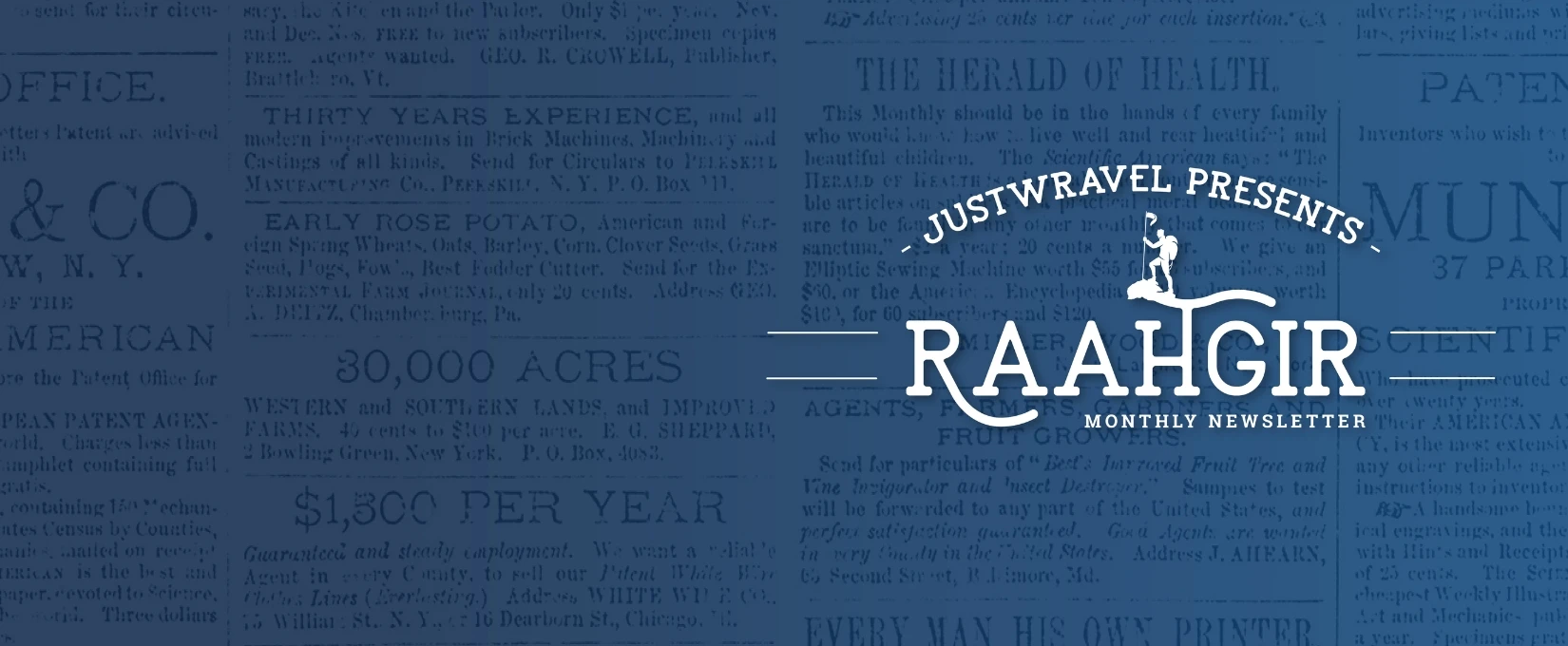
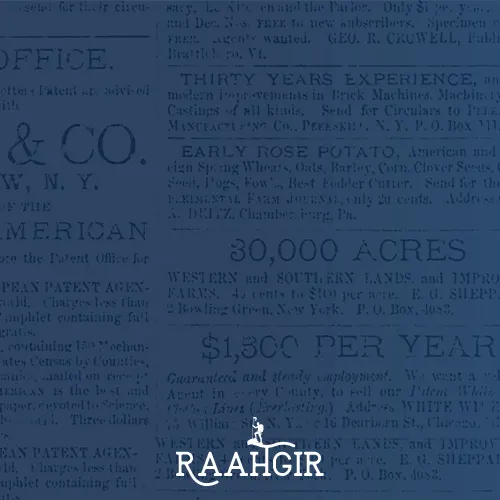
Newsletter
Sign up now!
Be the first one to know all about the Exciting Offers, Travel Updates and more.

B-42, 2nd Floor, Tower- B, The Corenthum, Block A, Sector 62, Noida, Uttar Pradesh 201301
© 2015-2025 JustWravel Pvt. Ltd.
Starts From
₹ 31,000

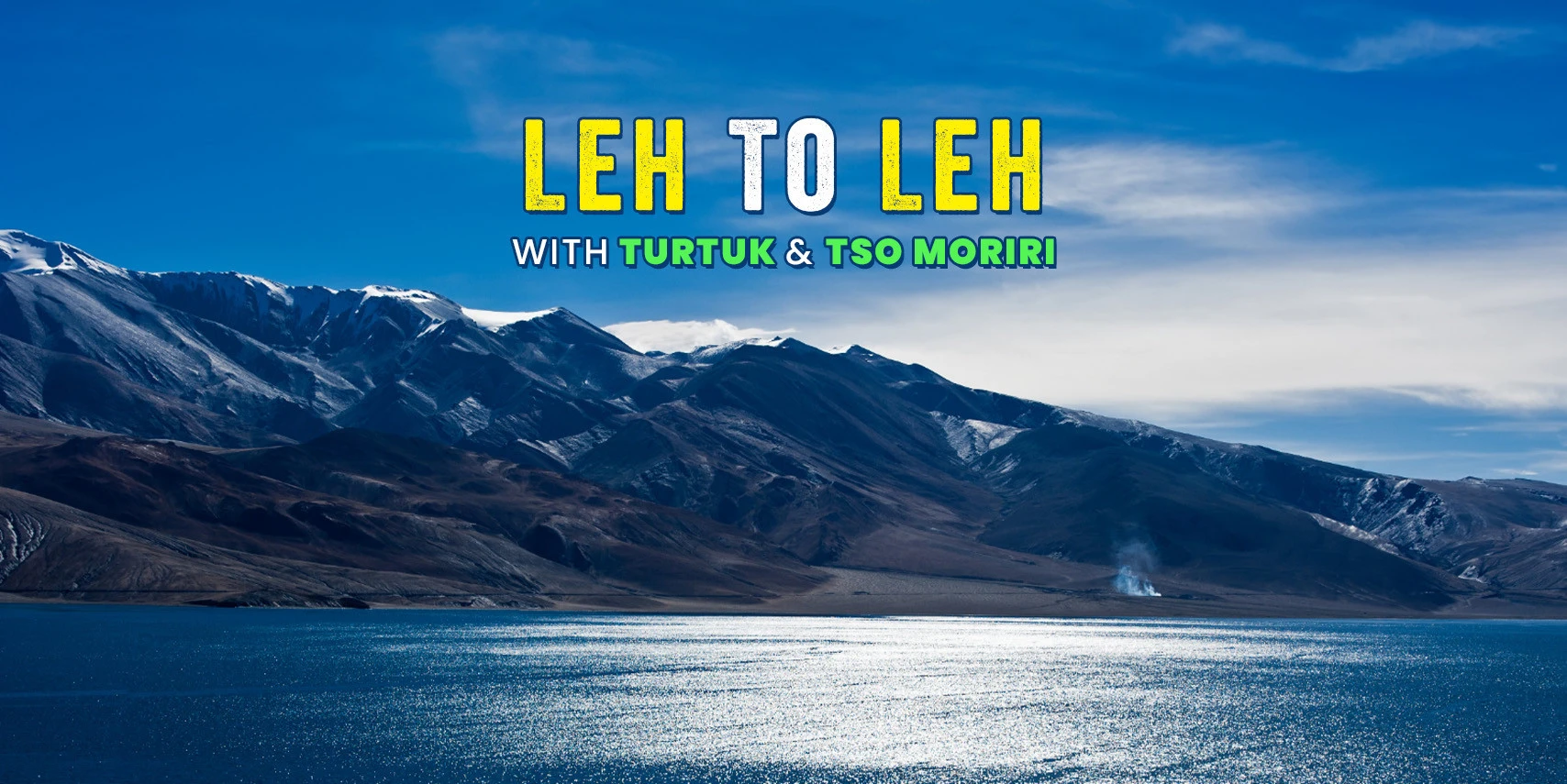


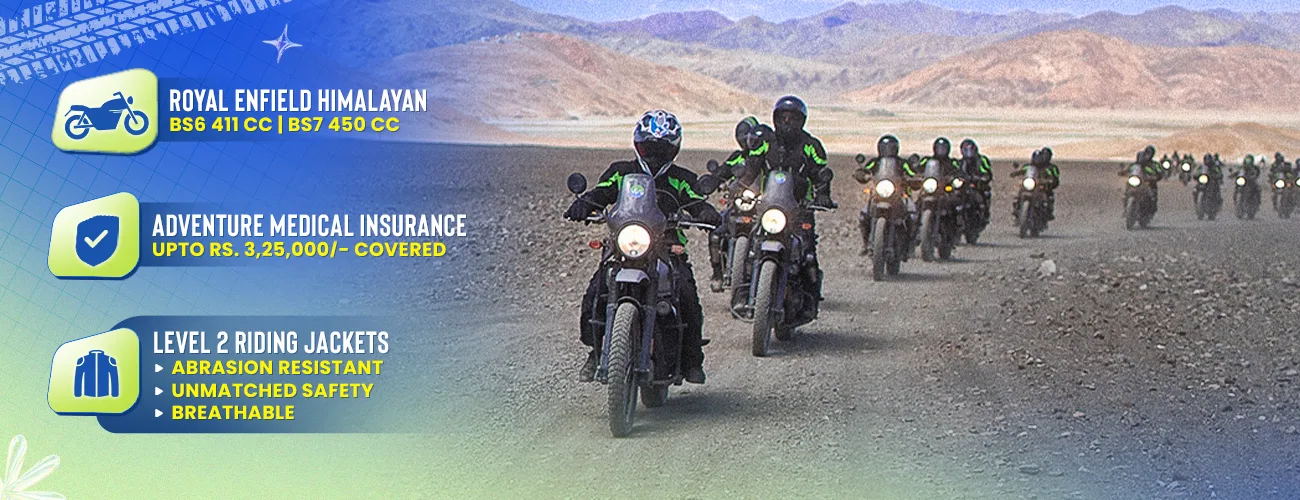
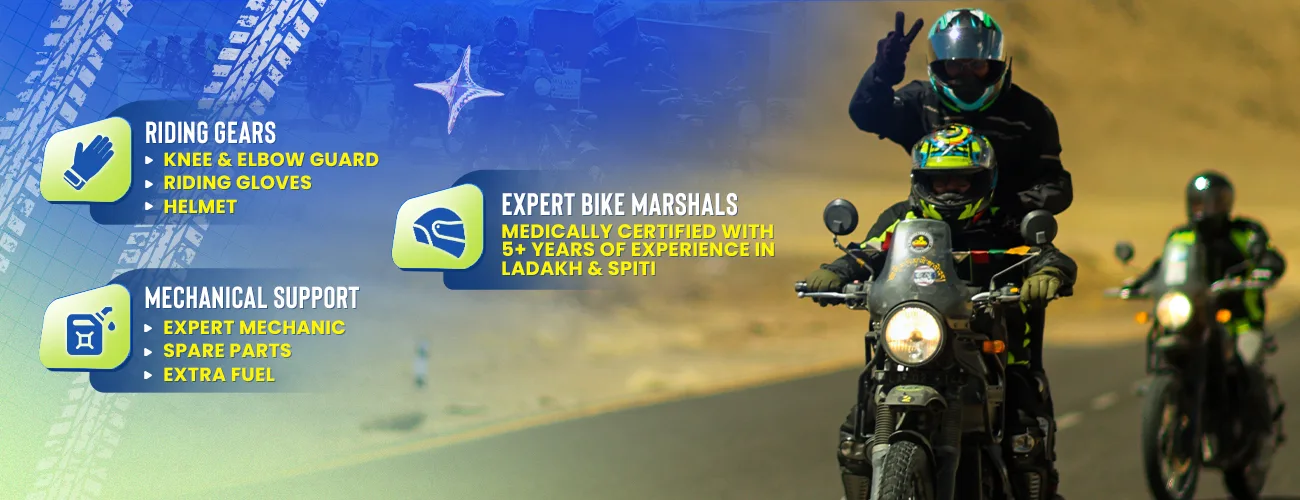
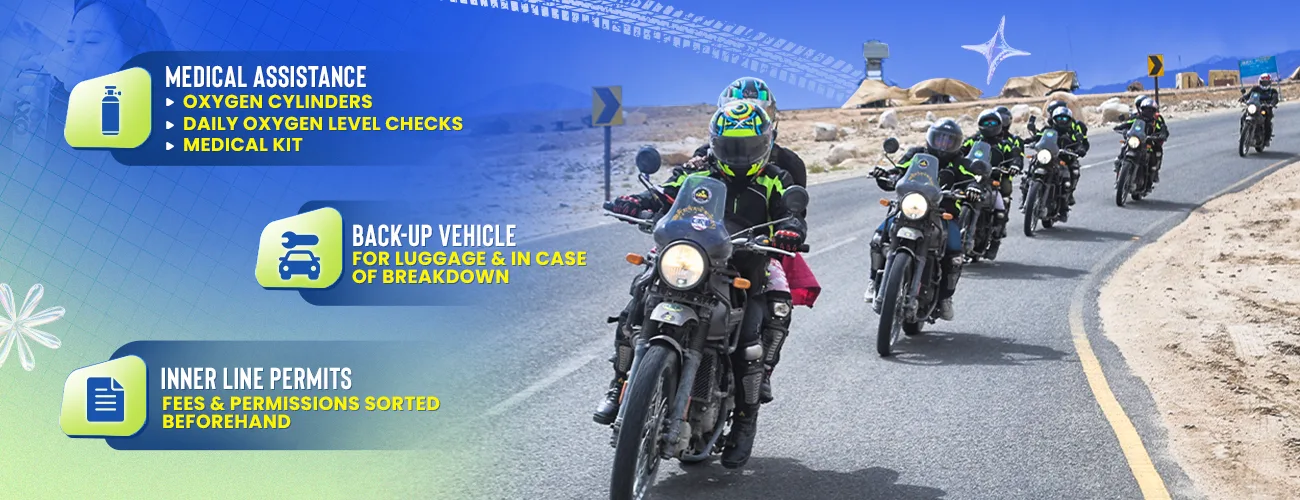




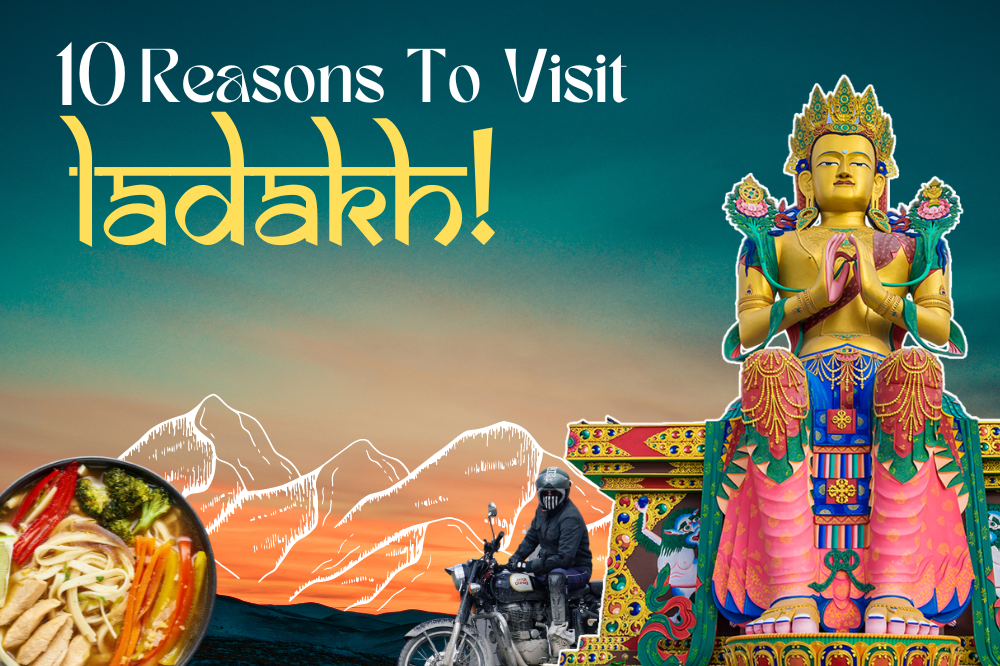
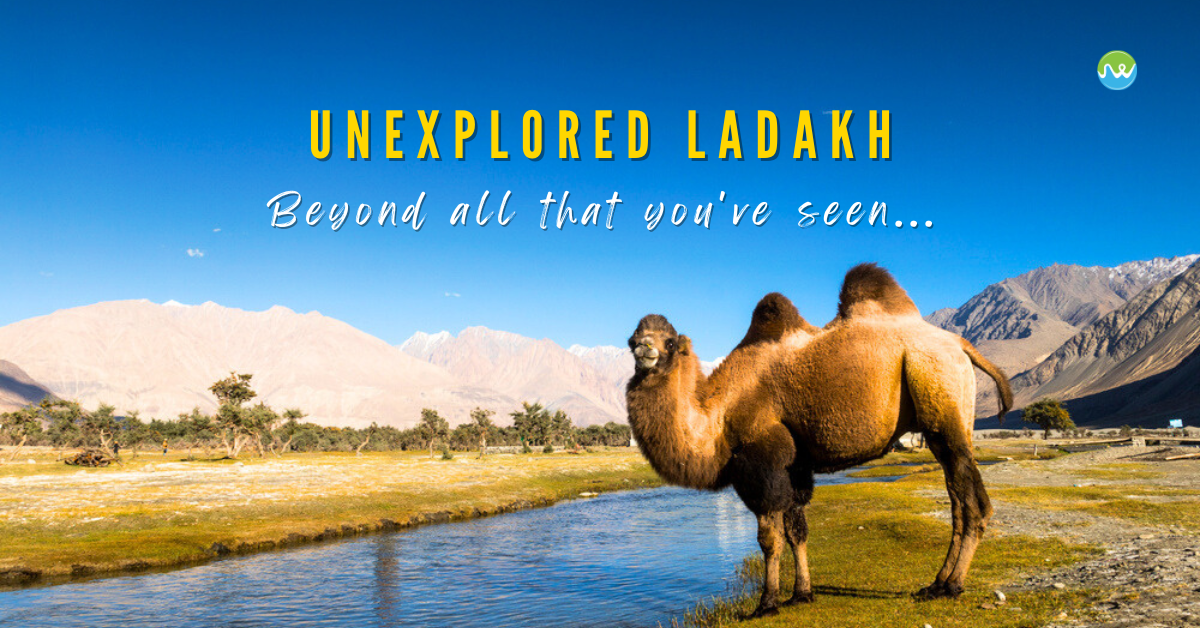

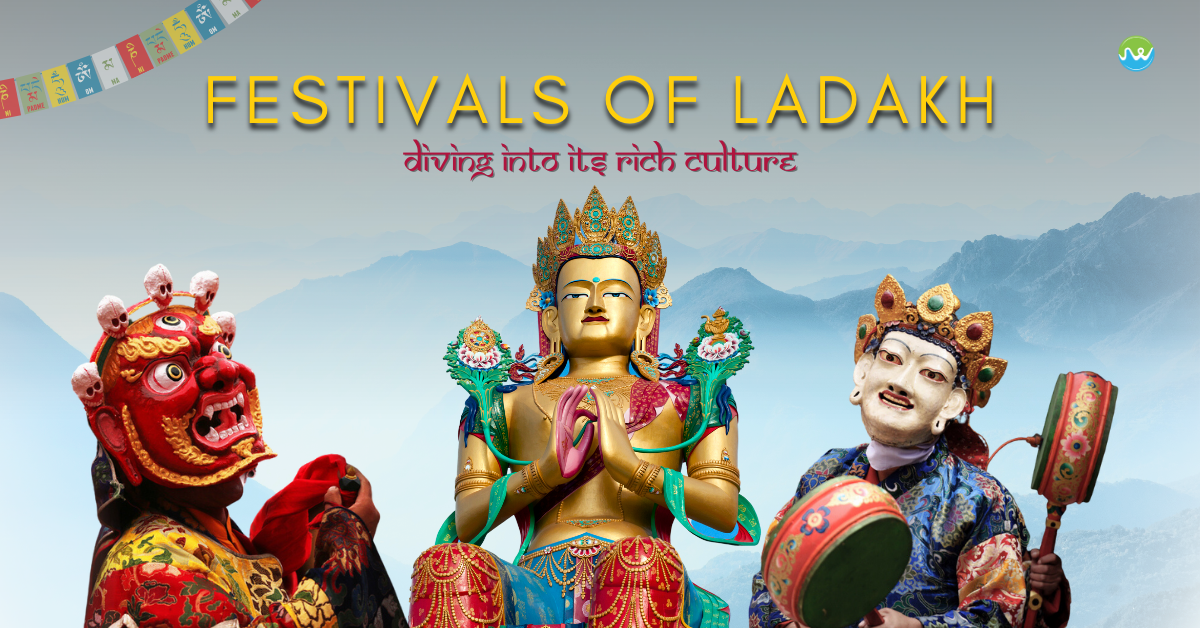
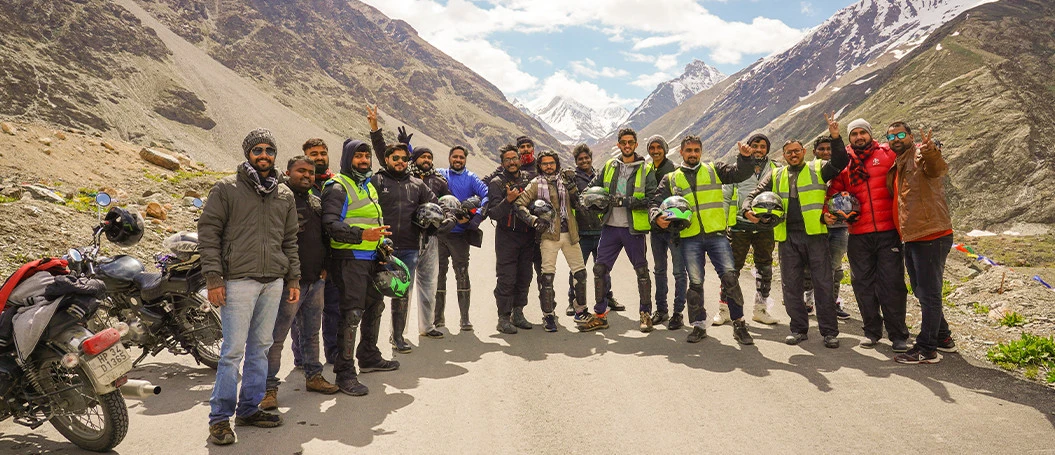
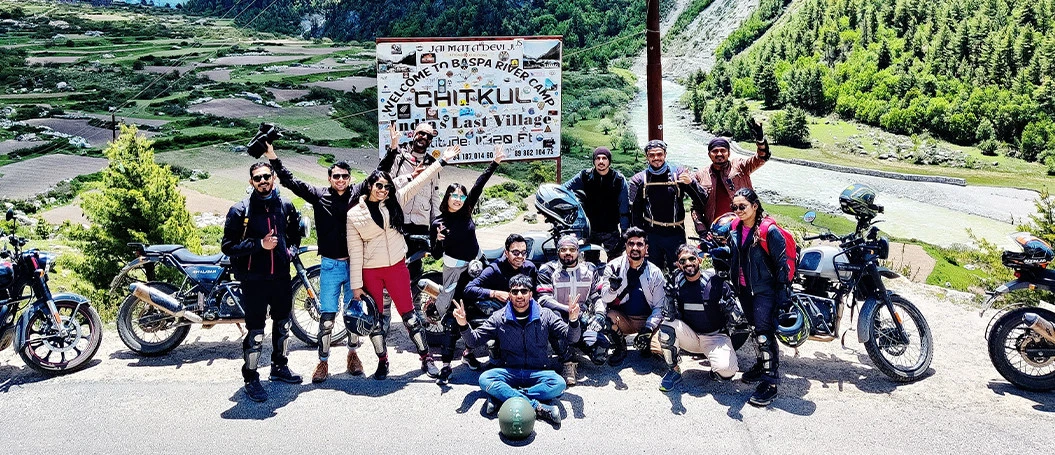
-5.jpg.webp)
